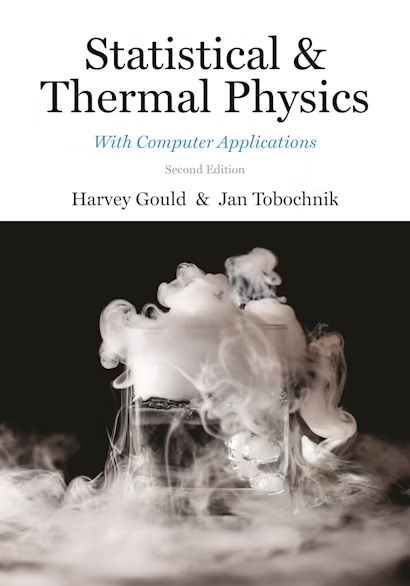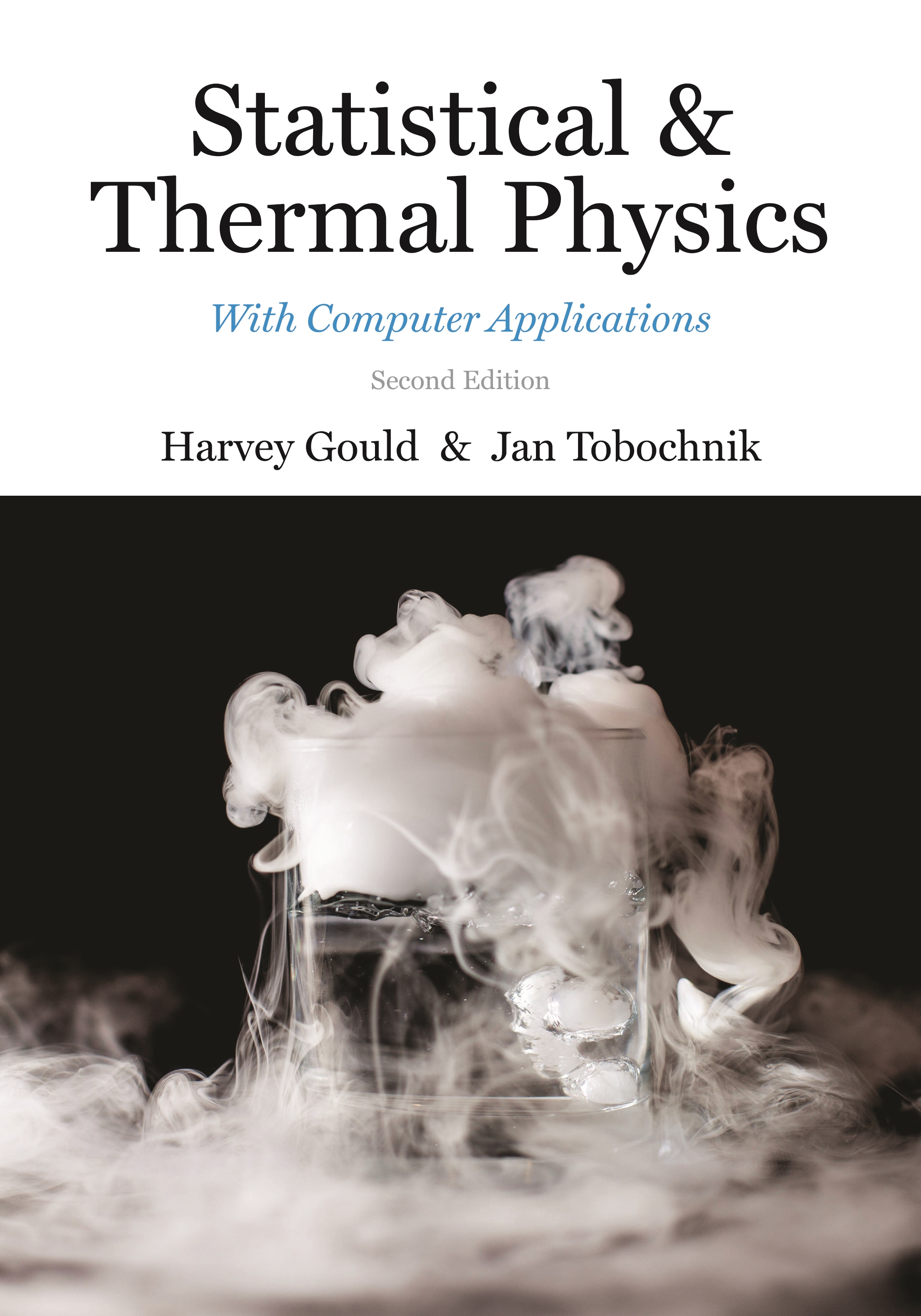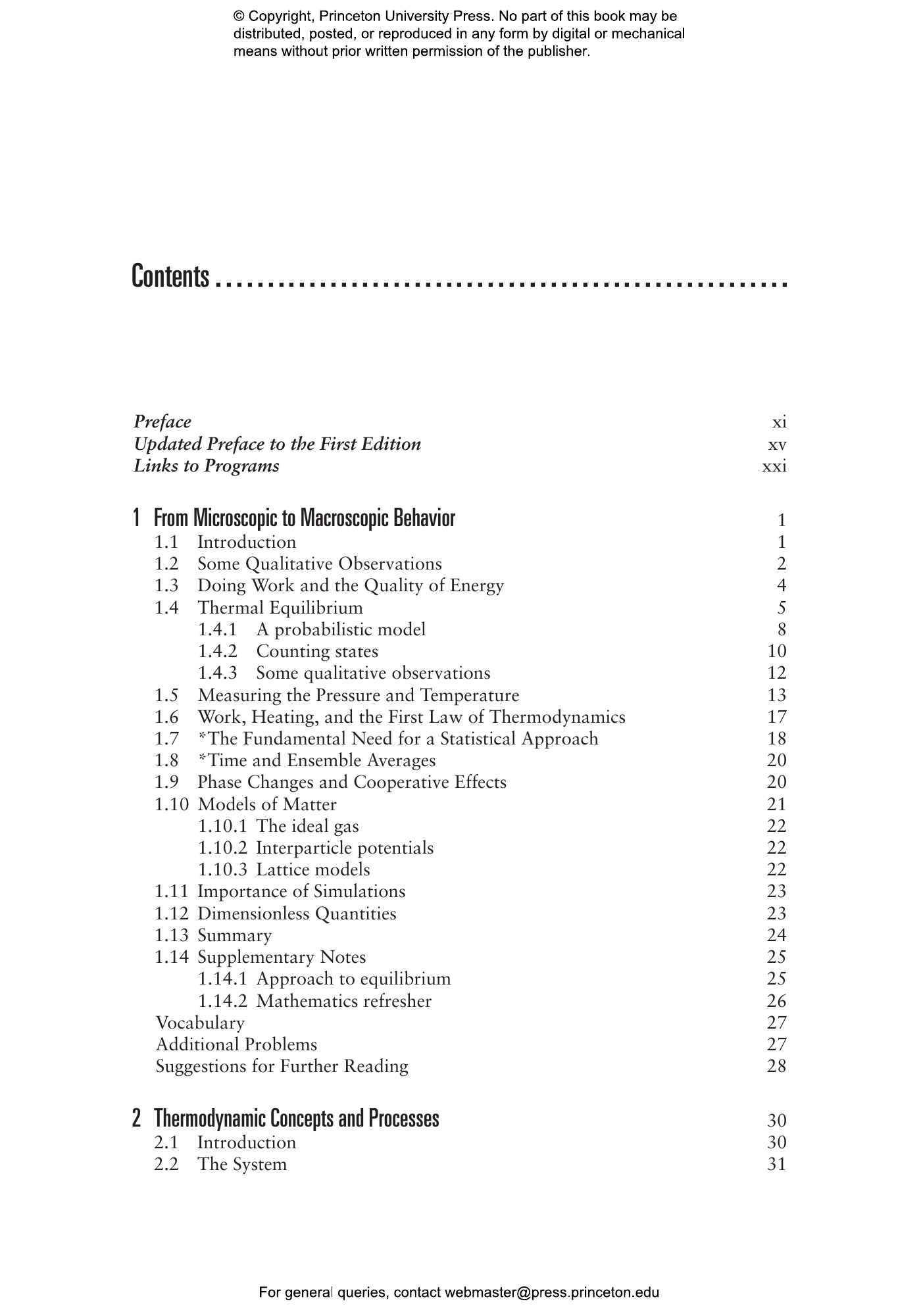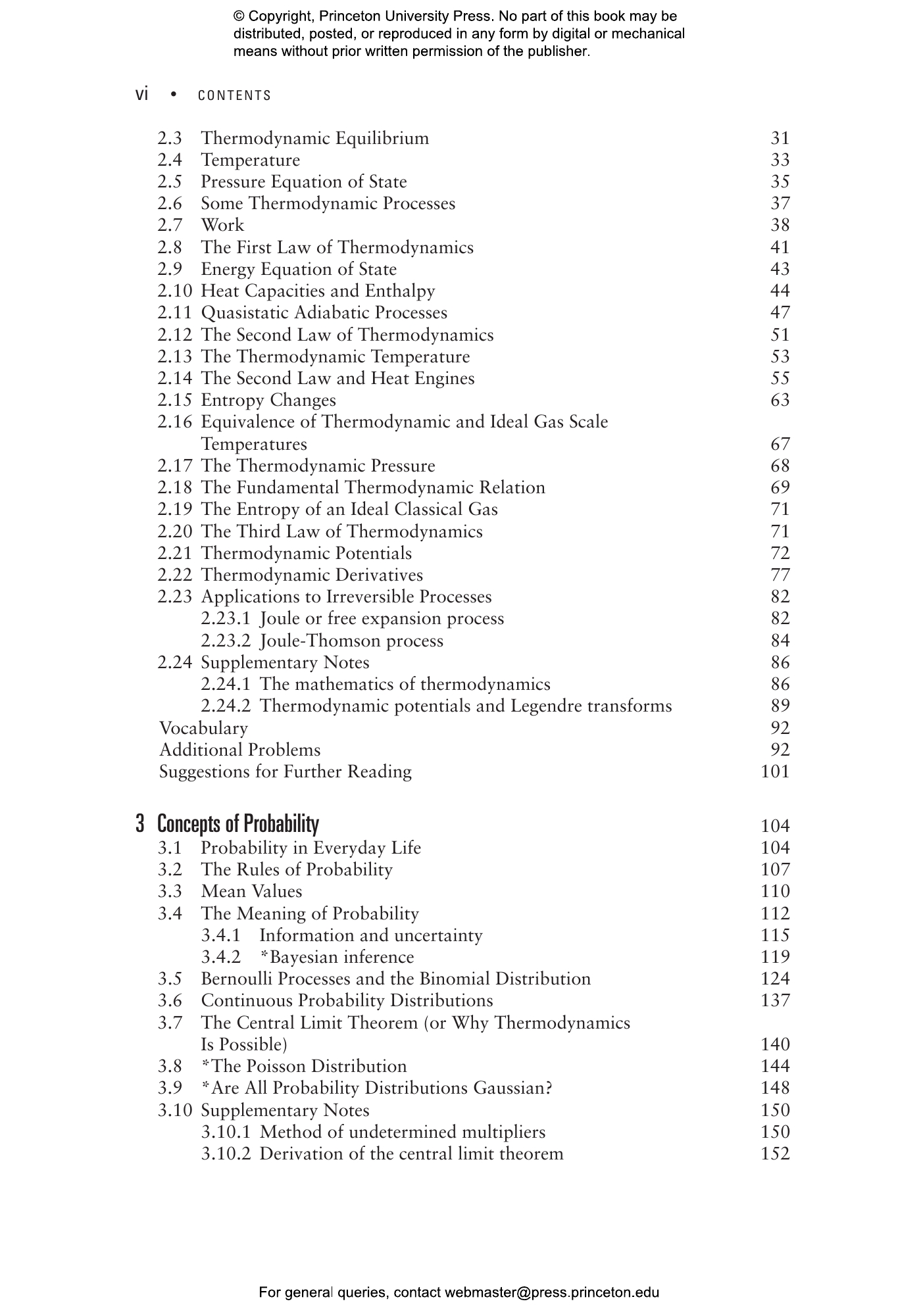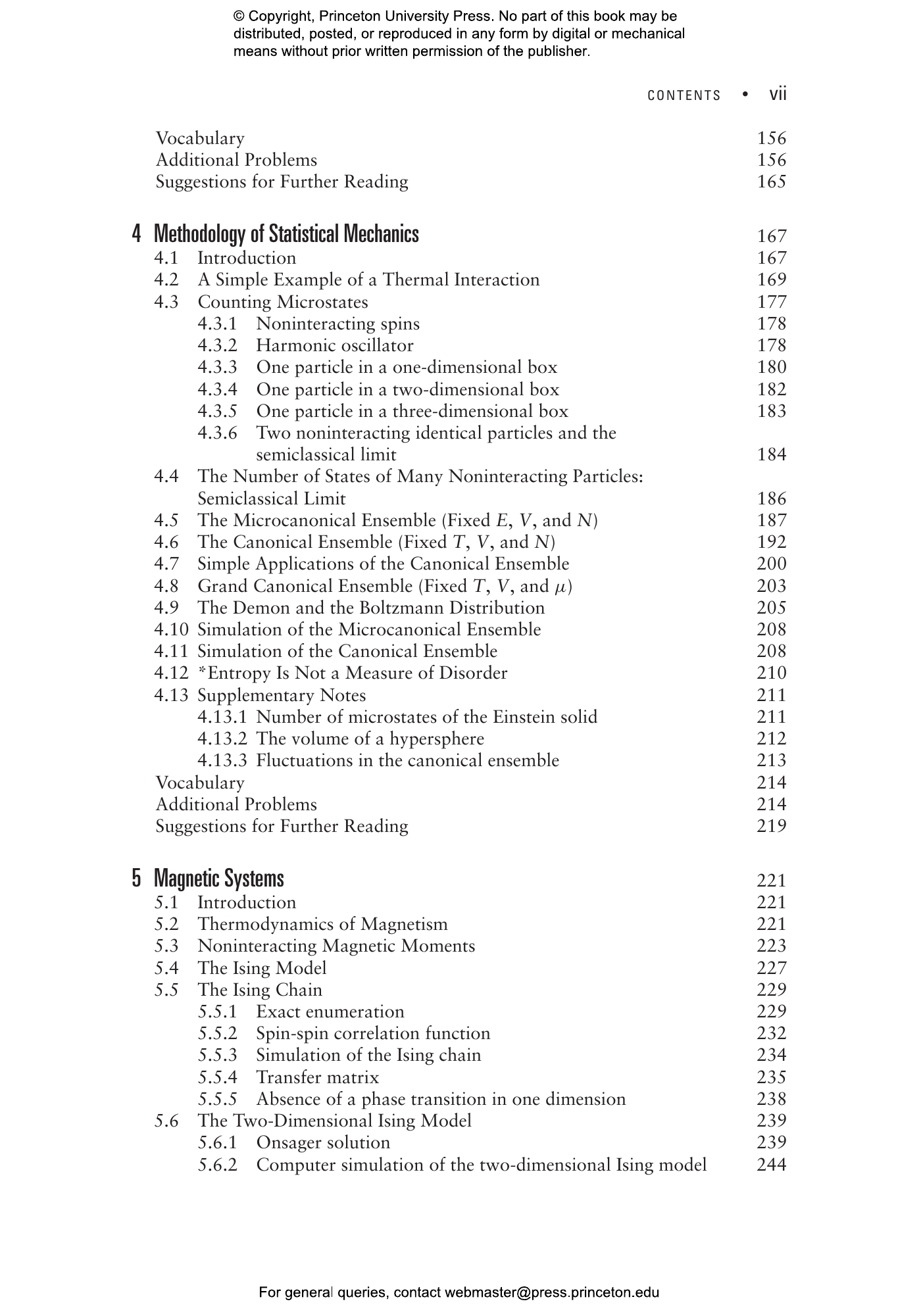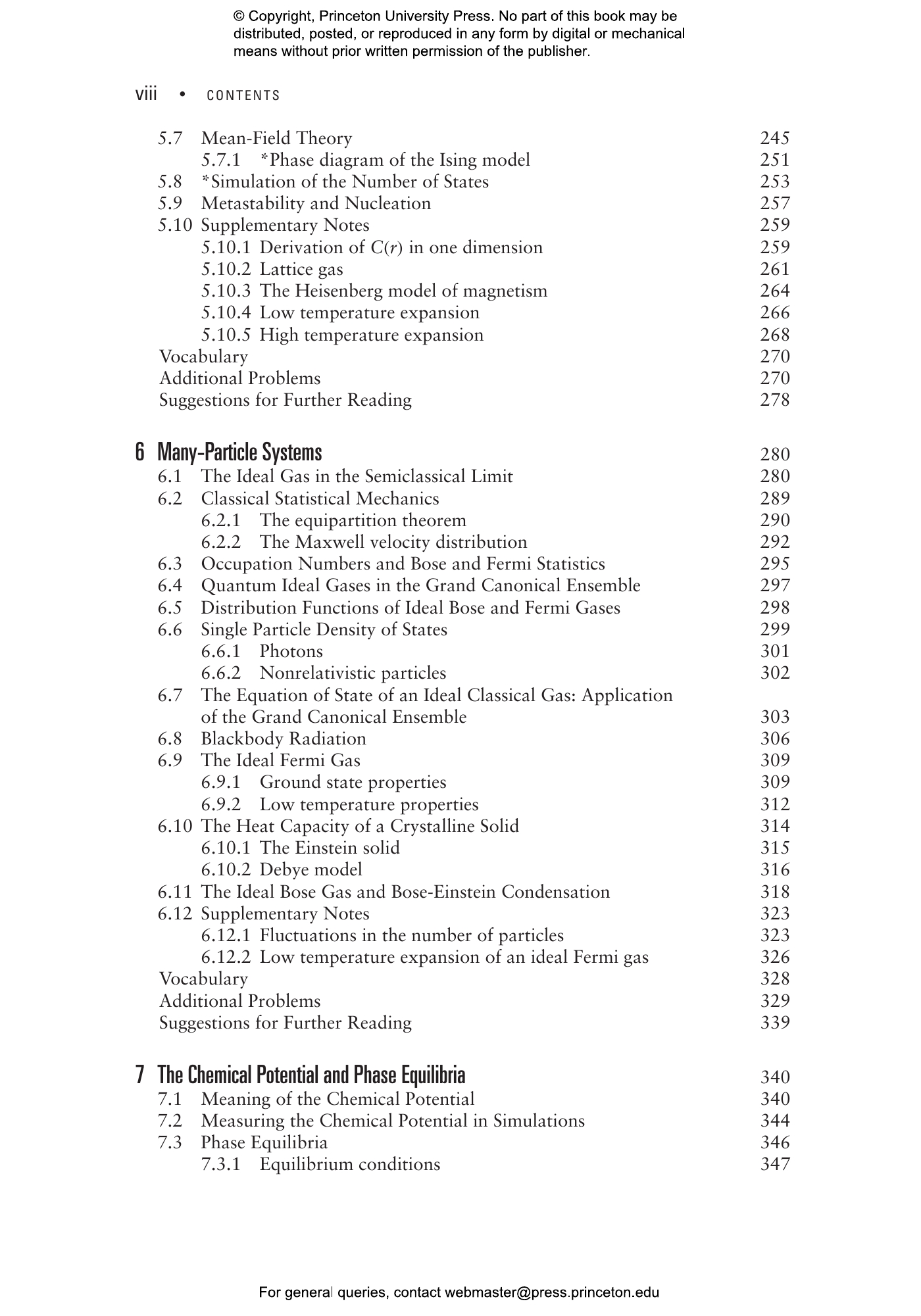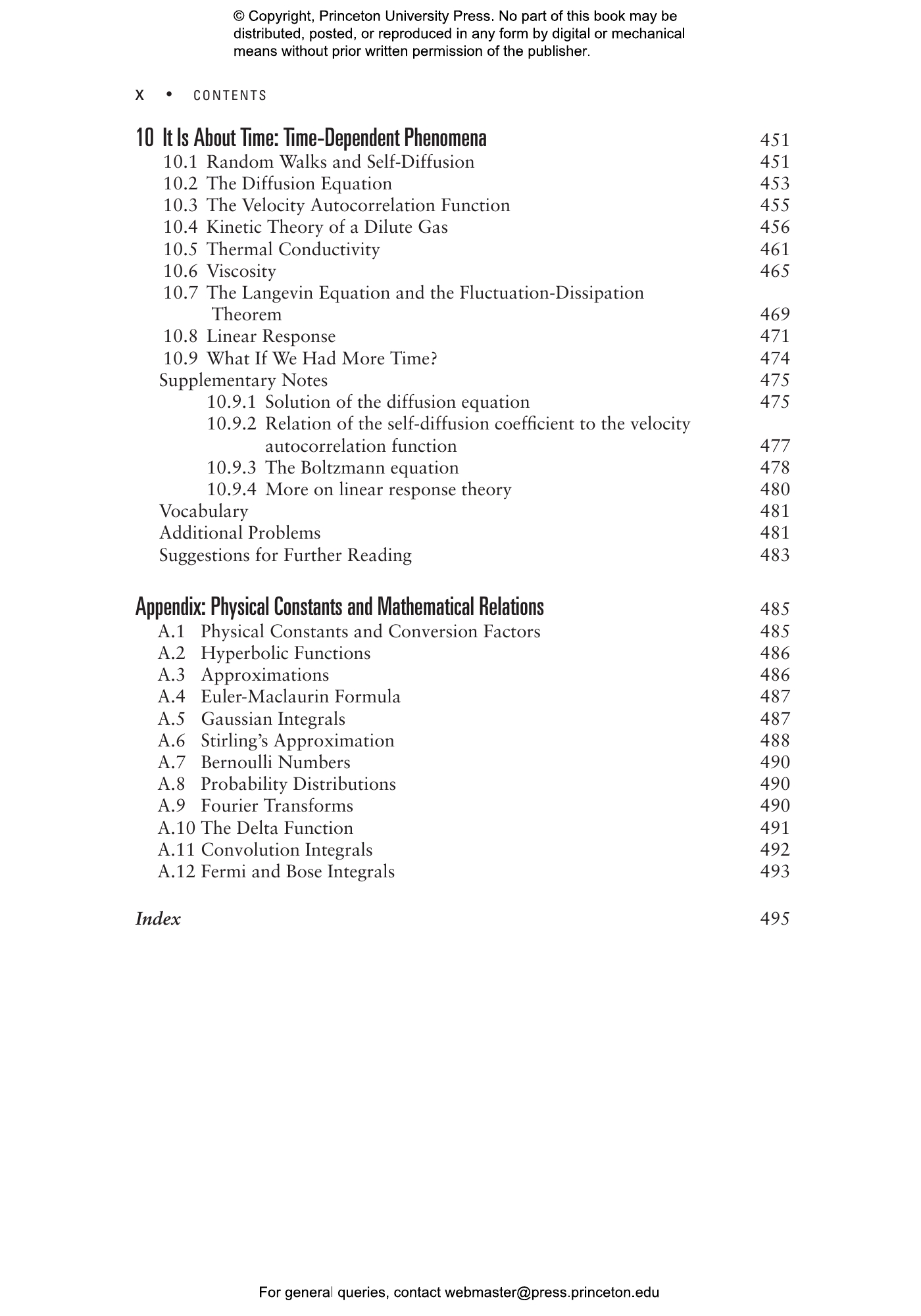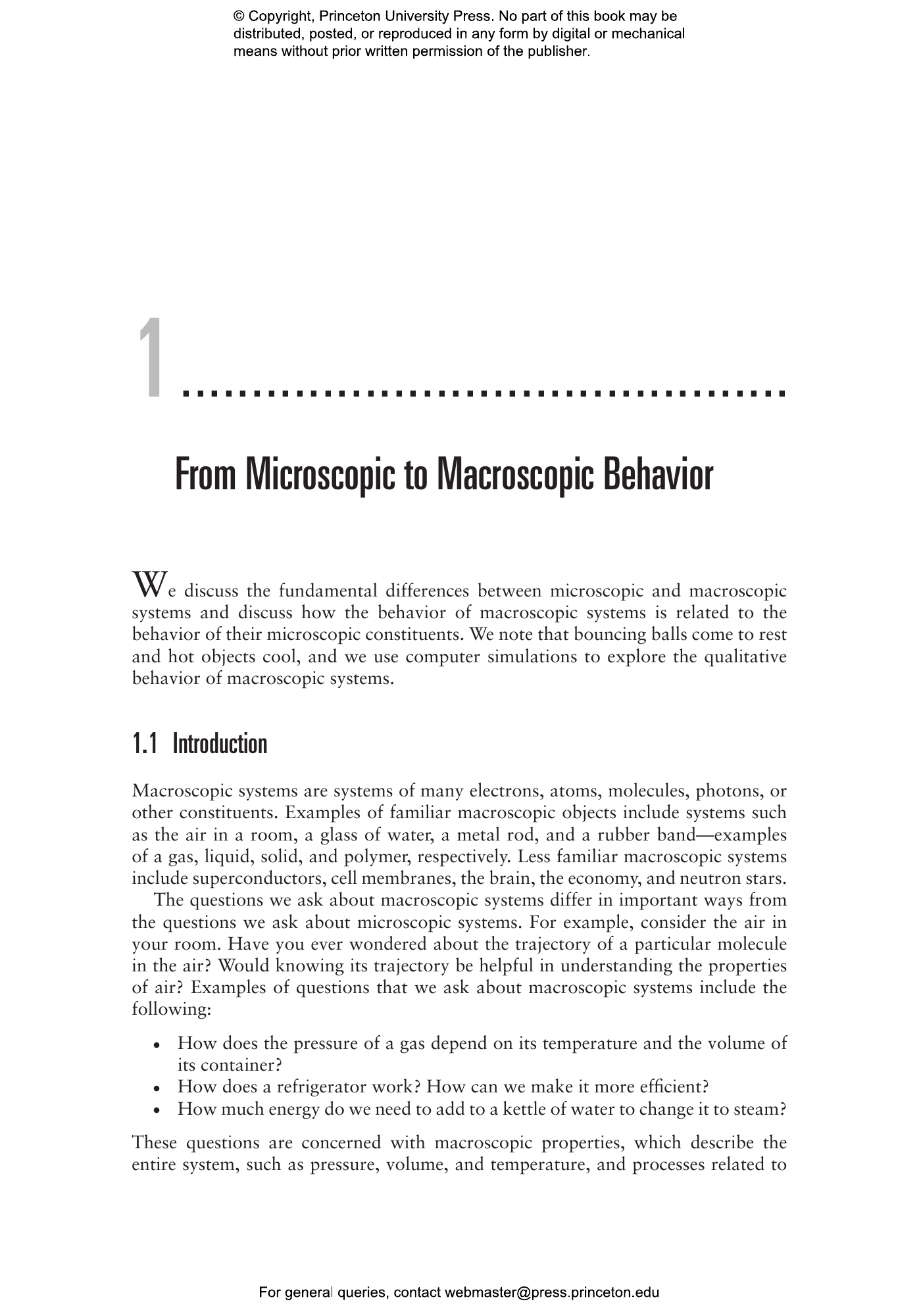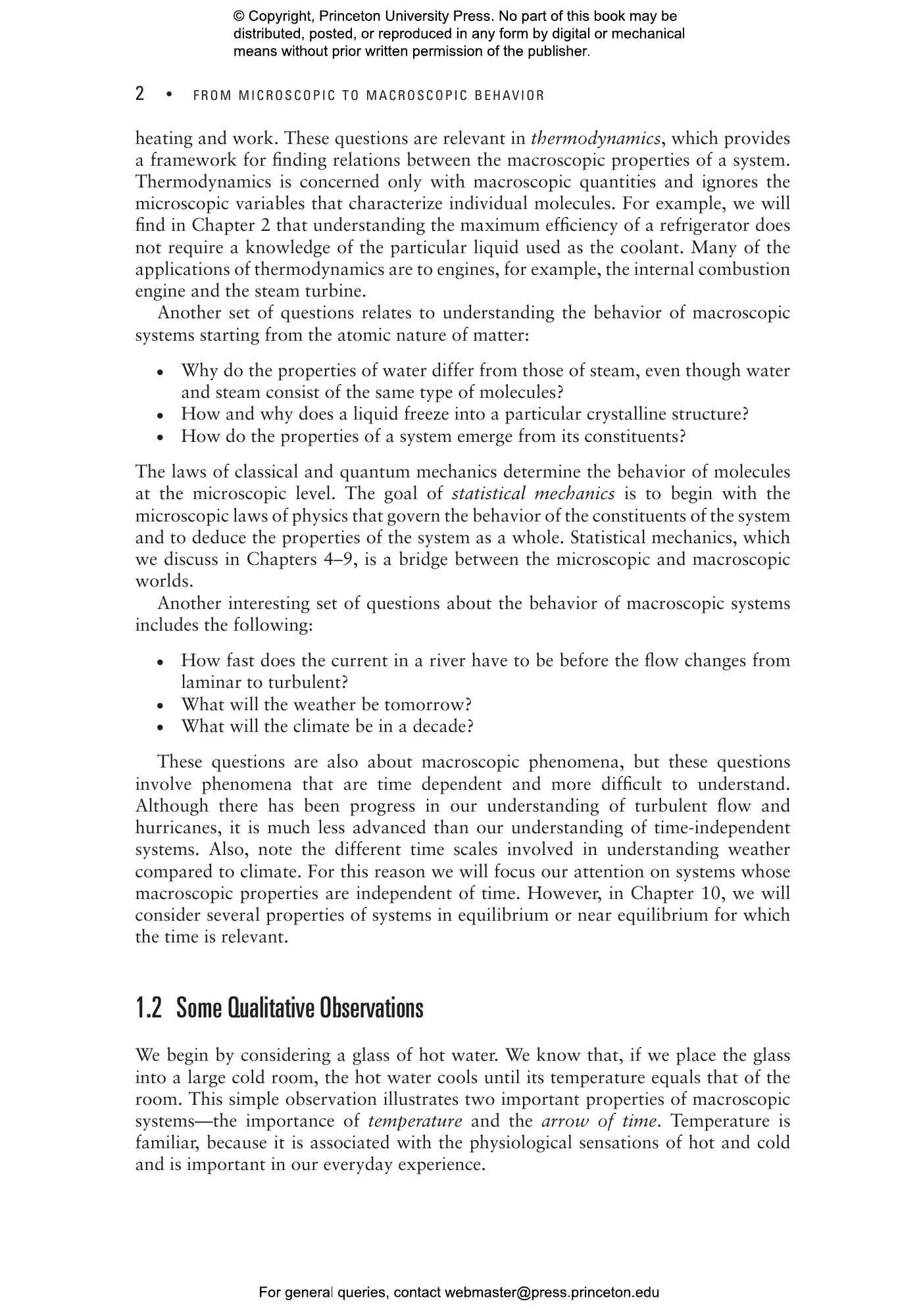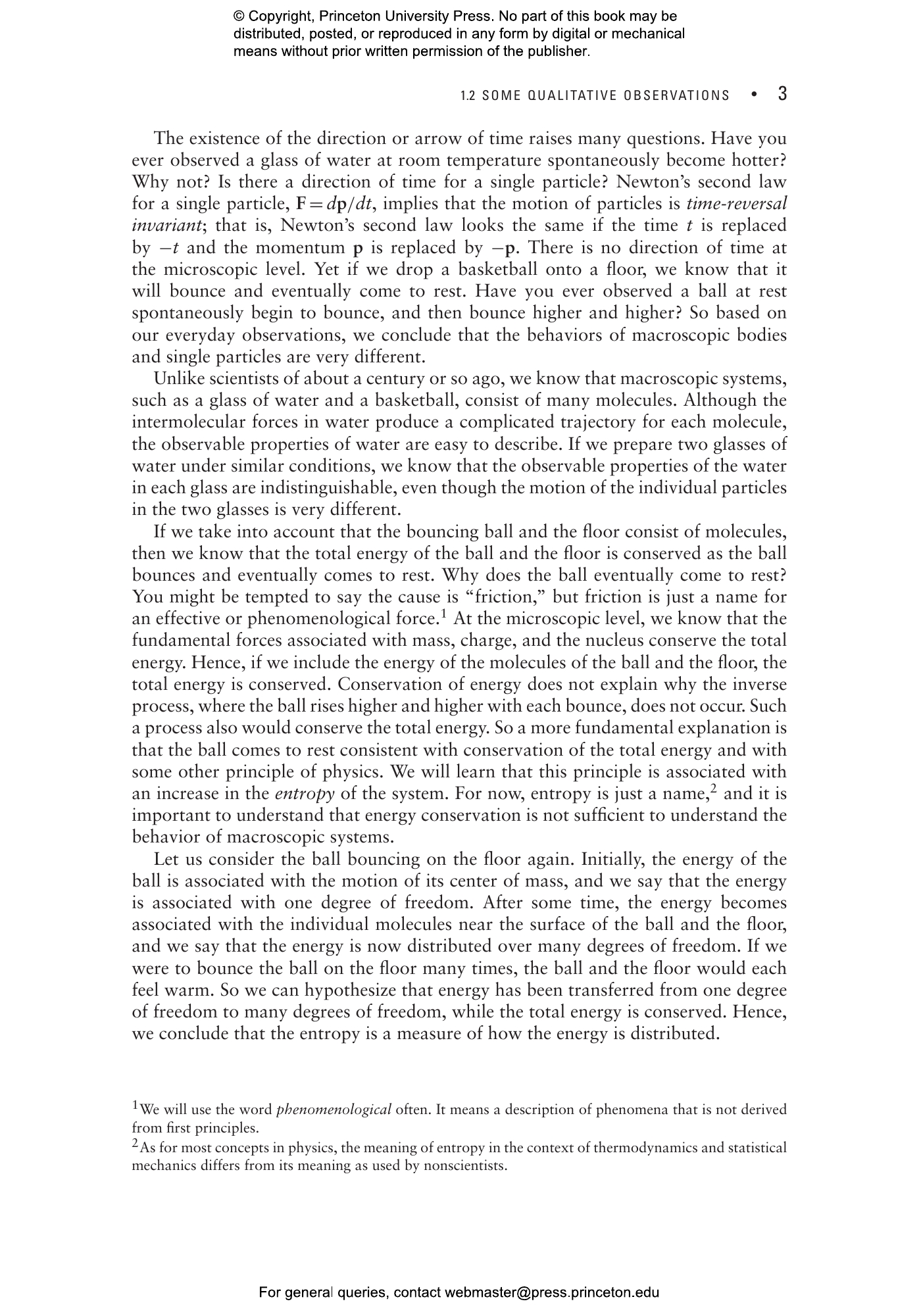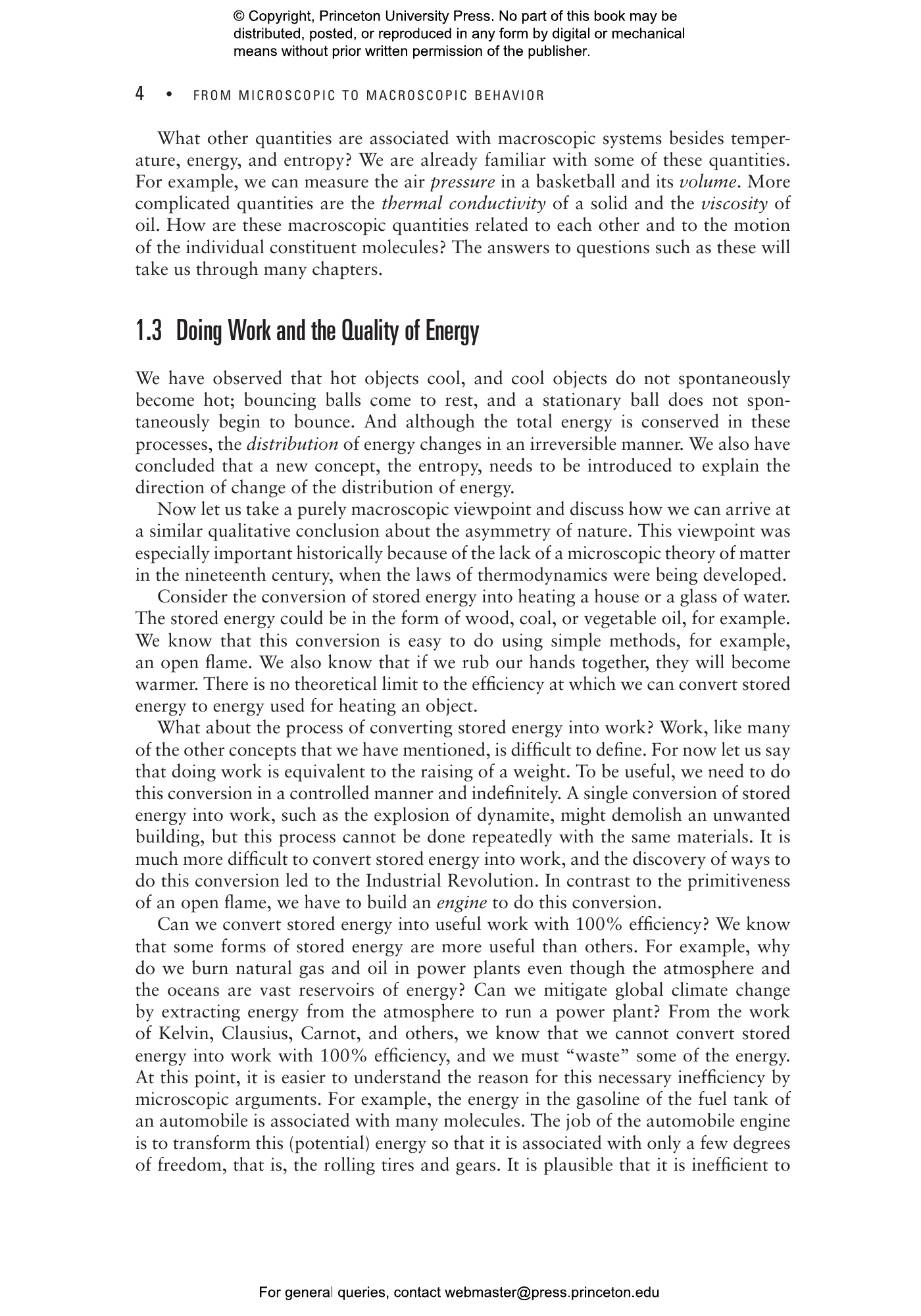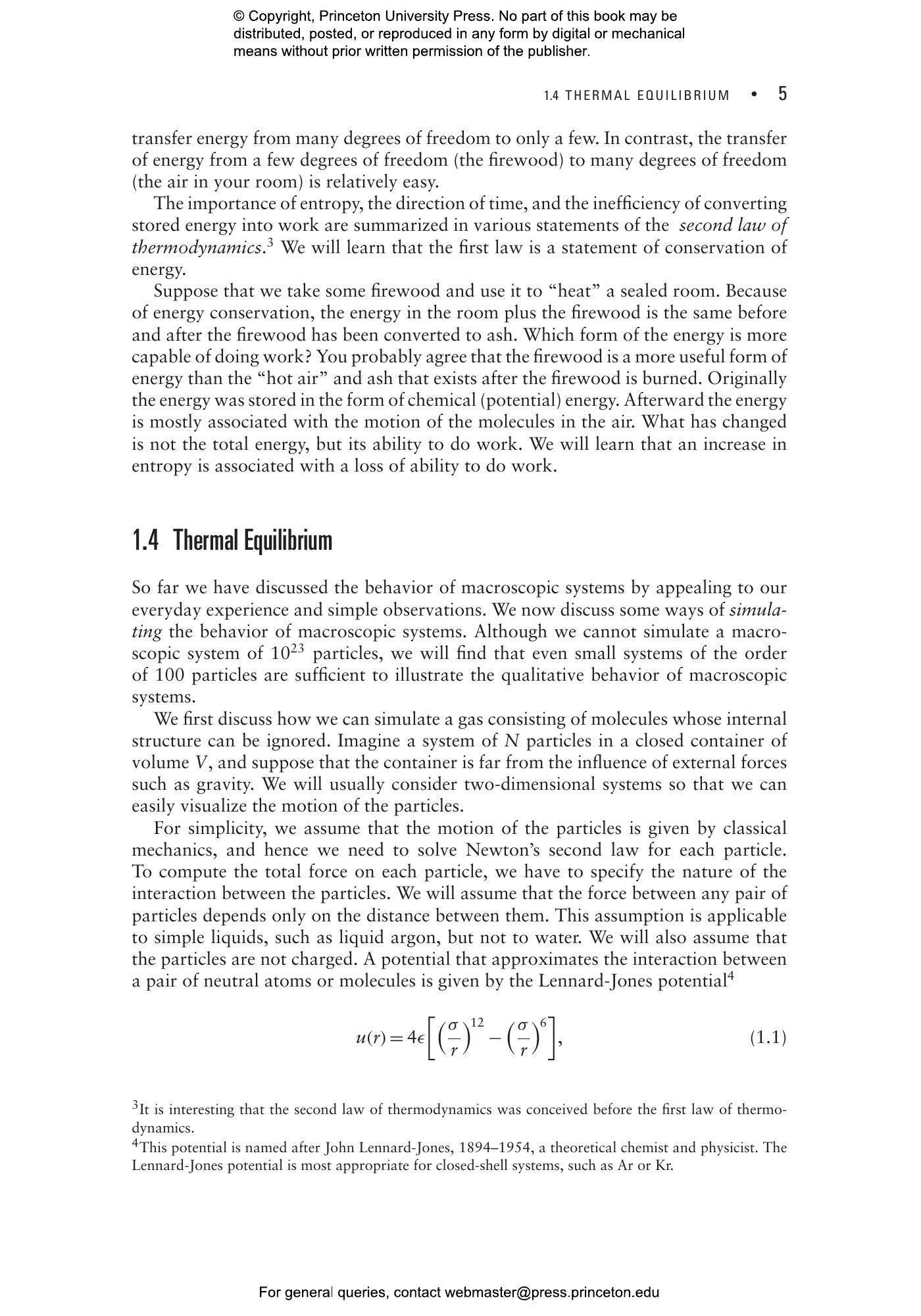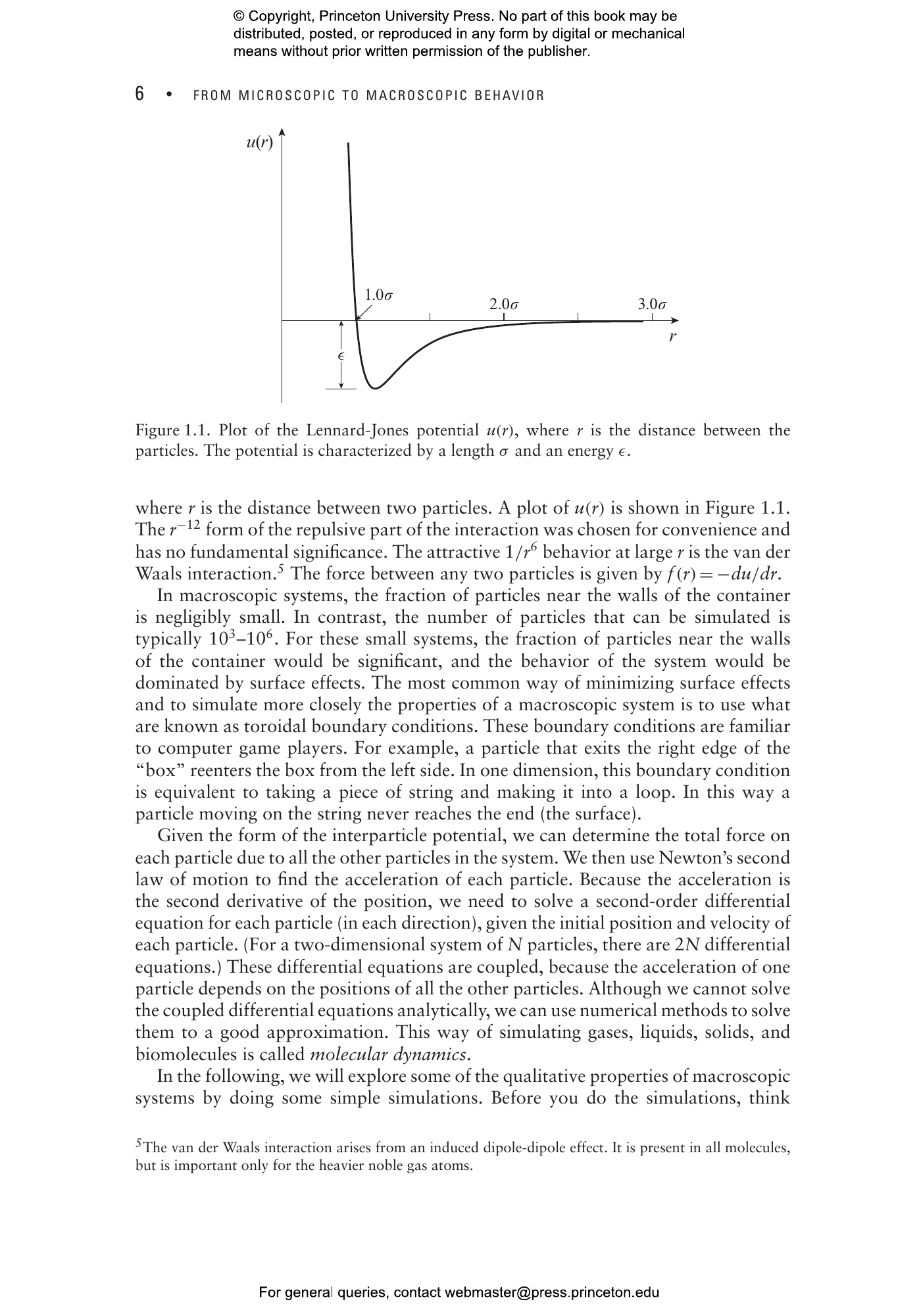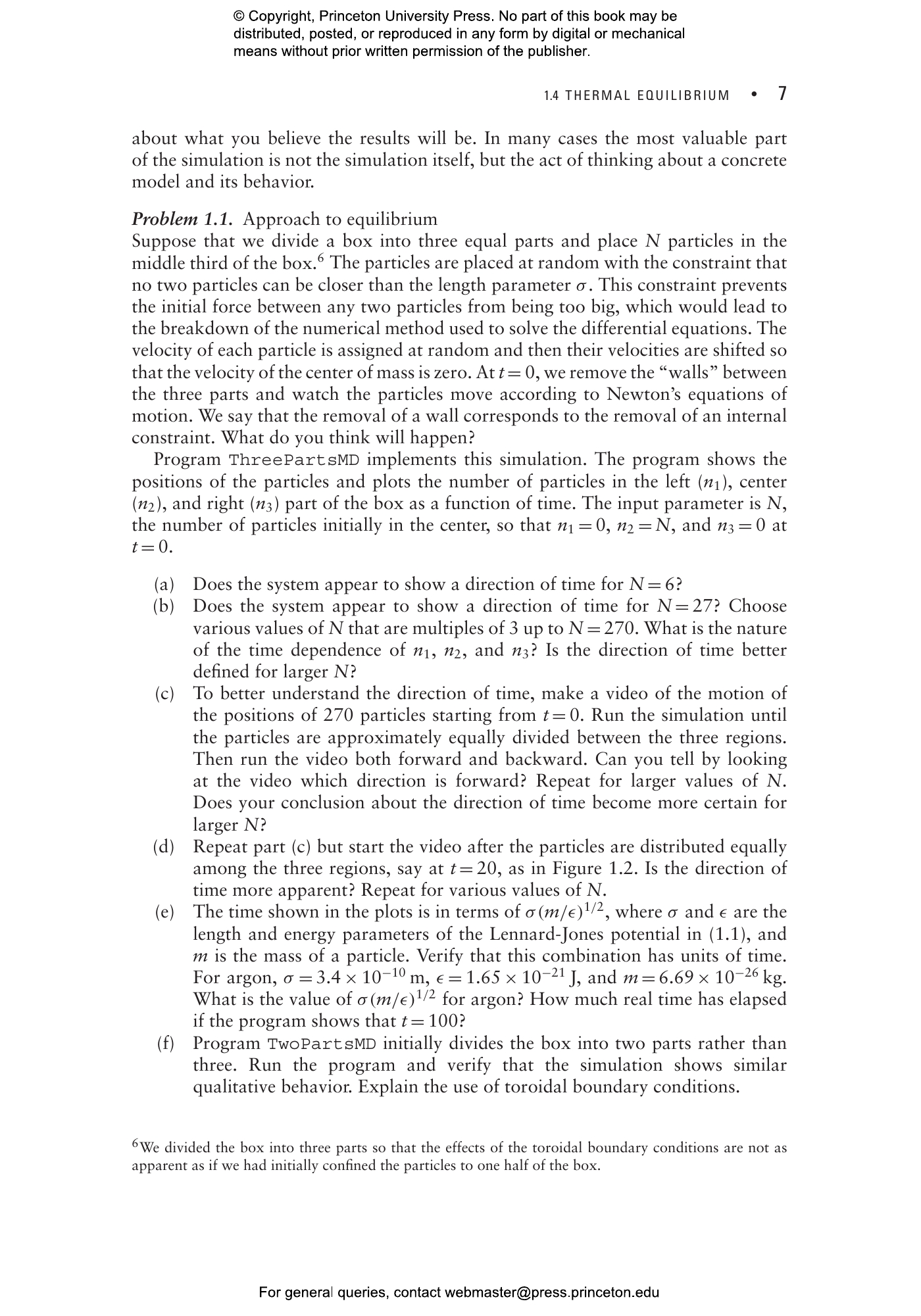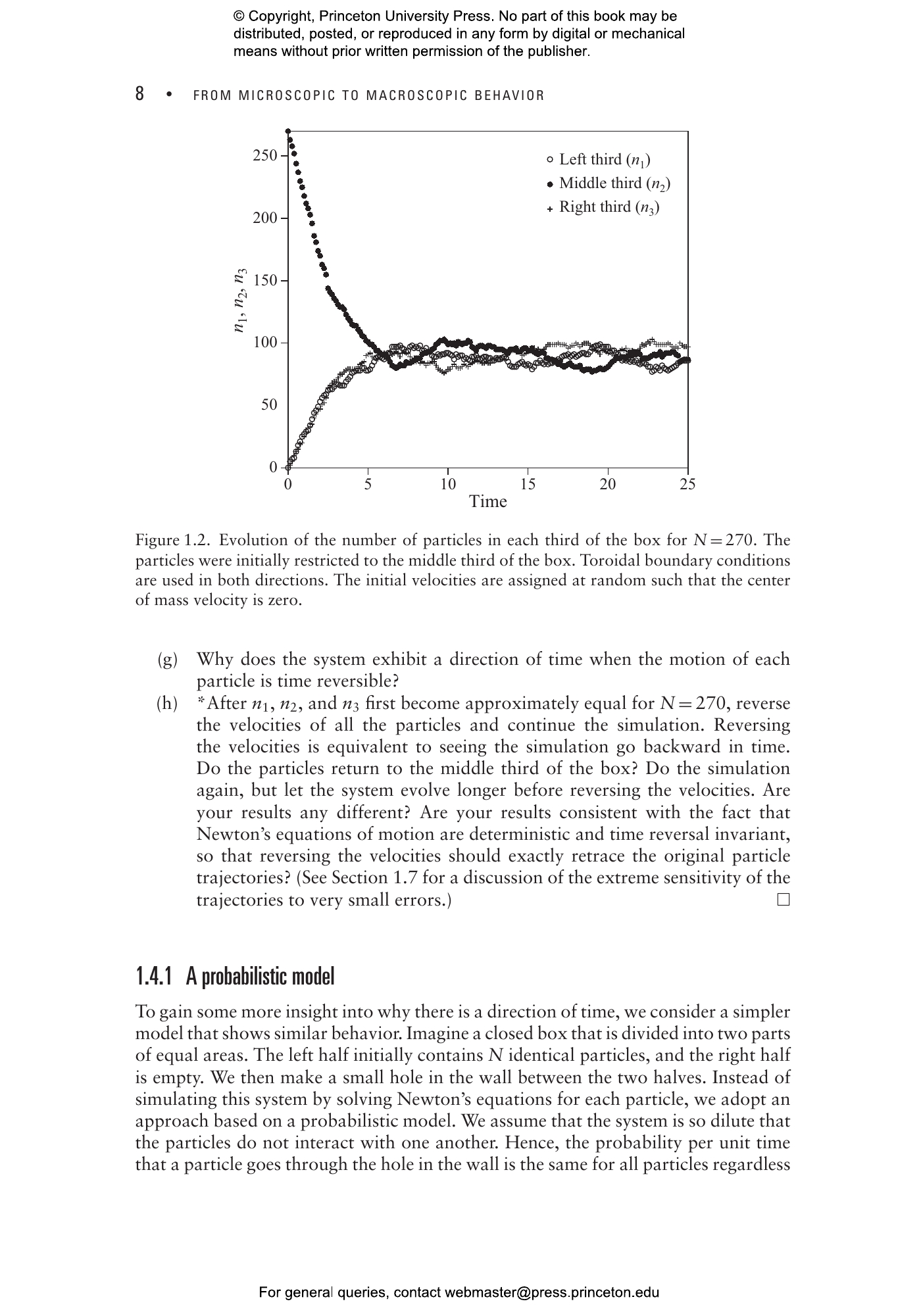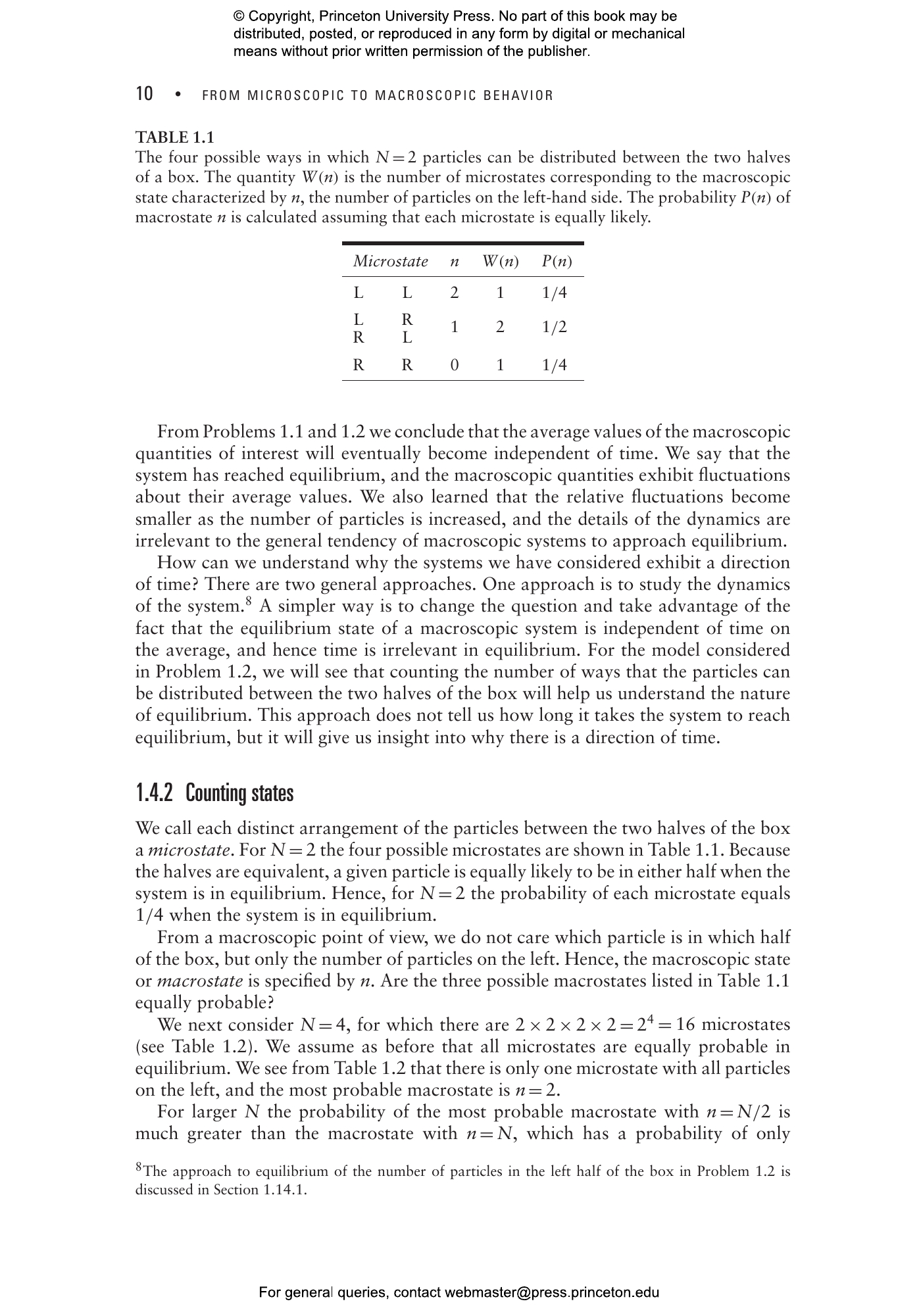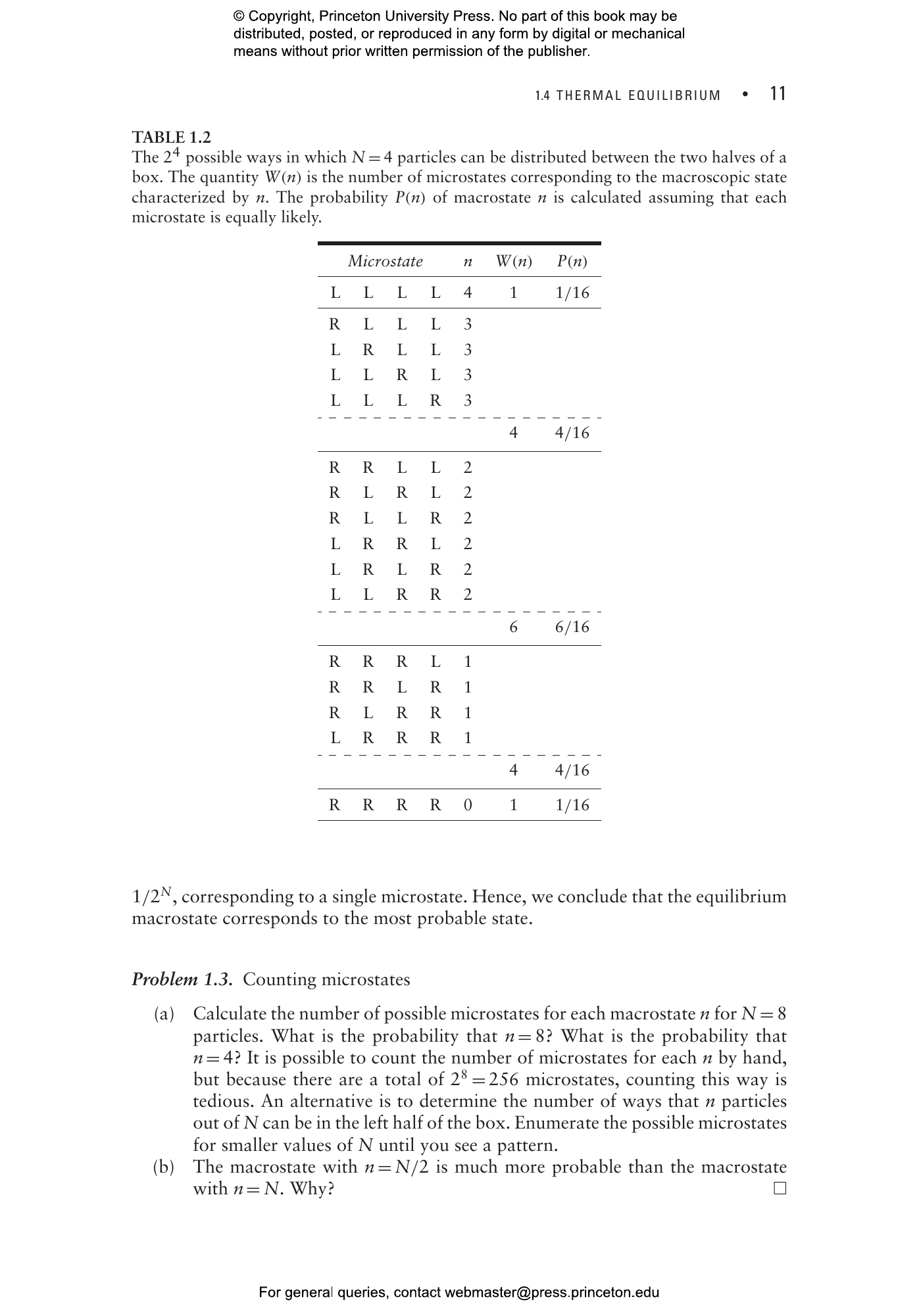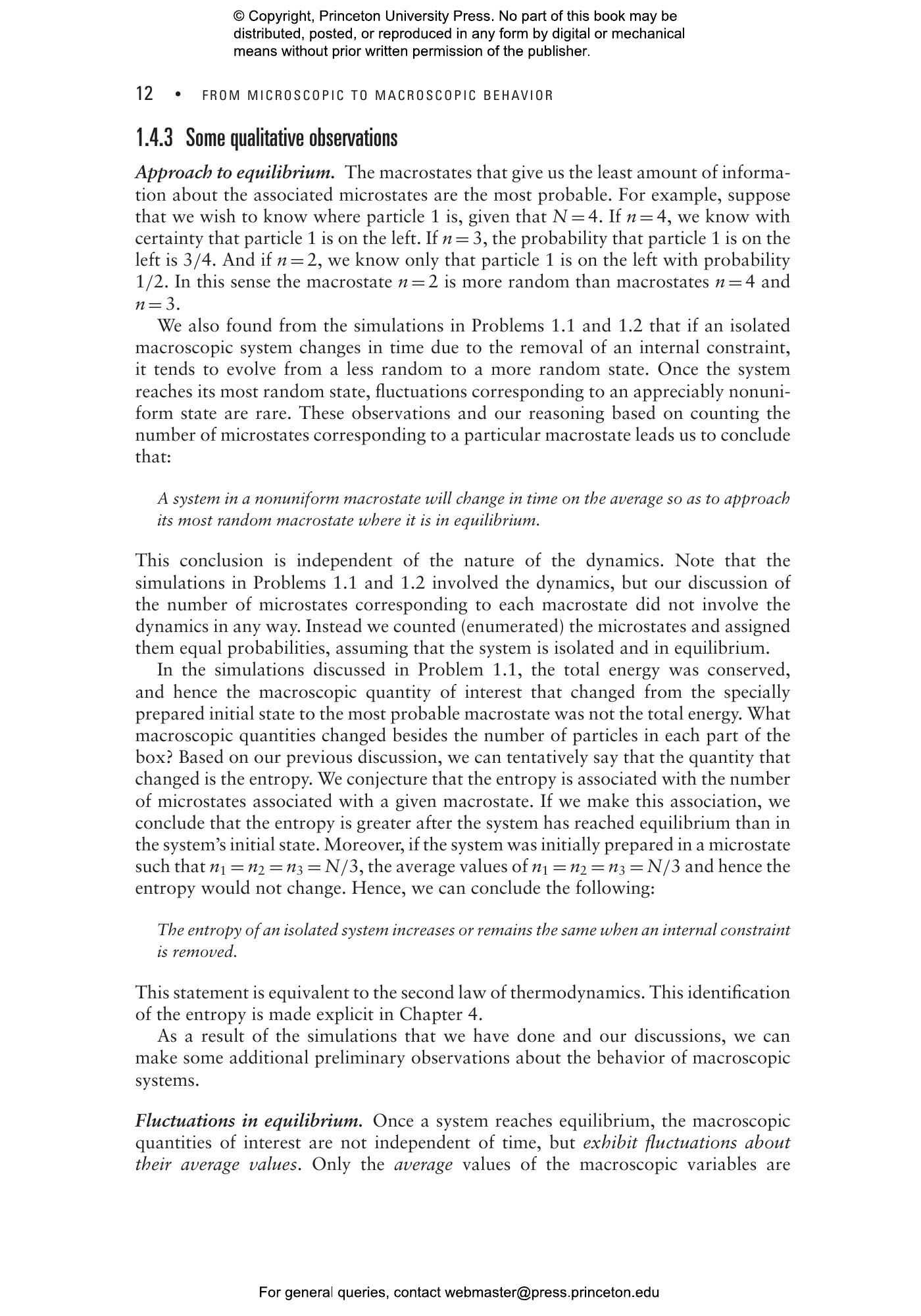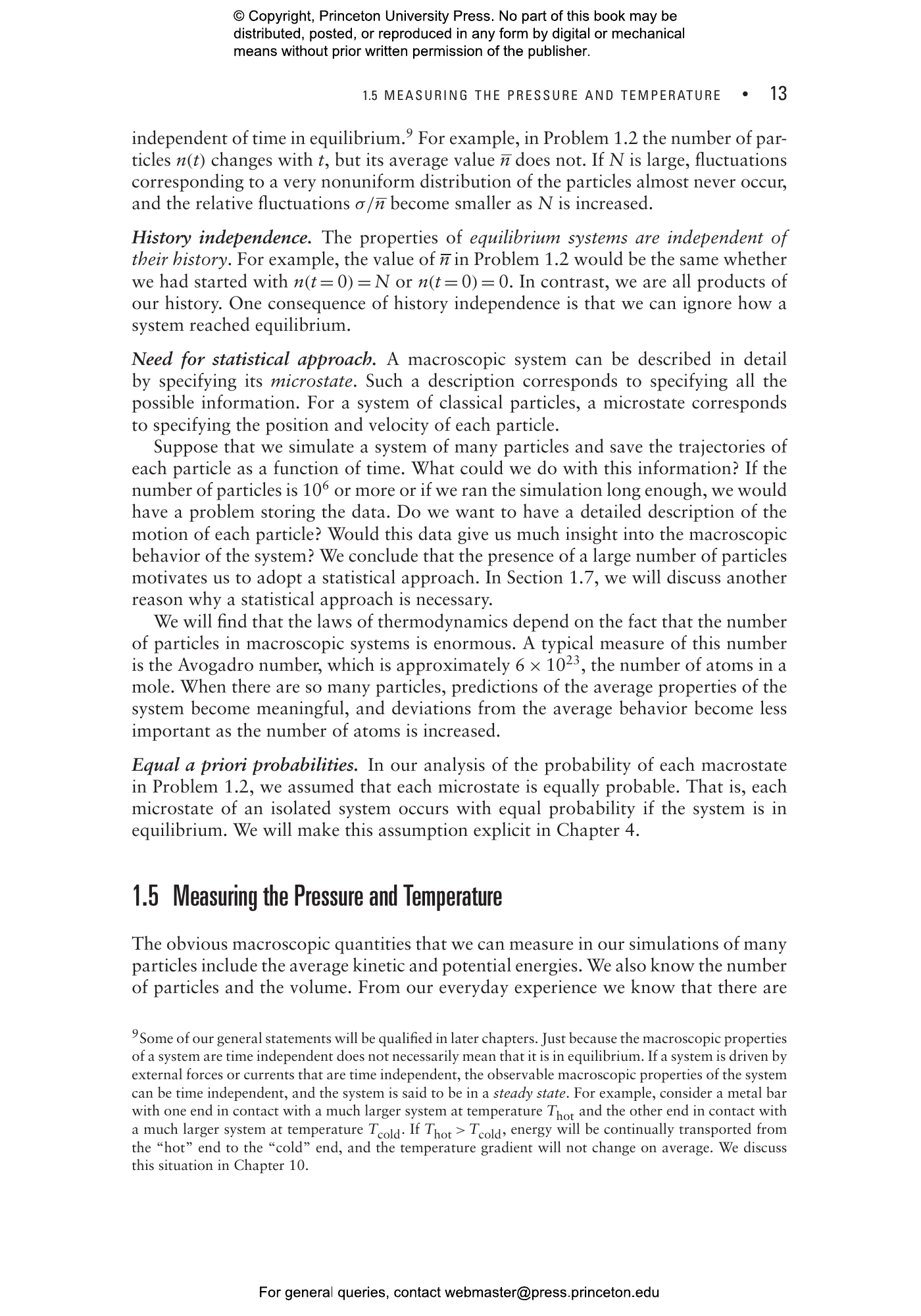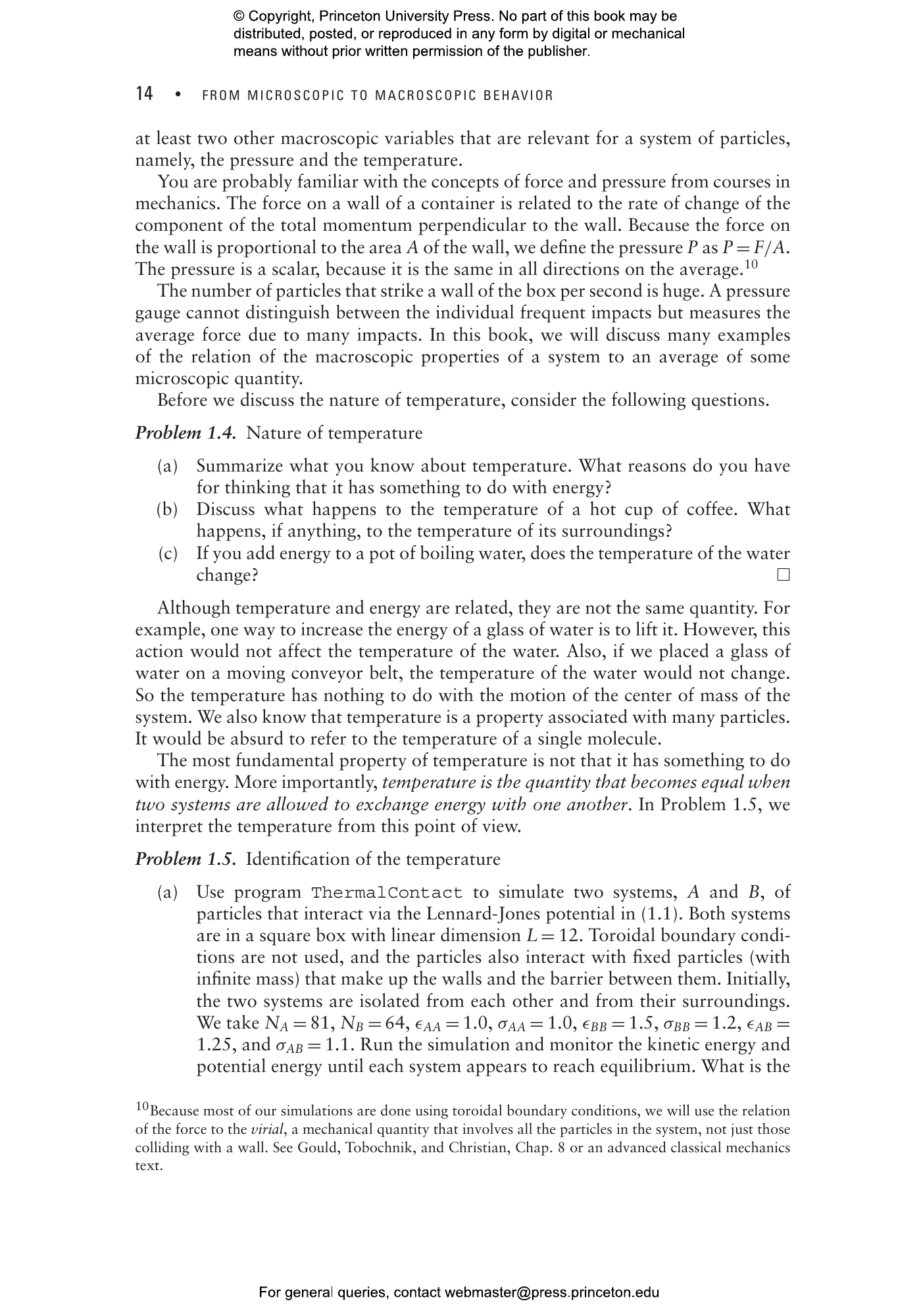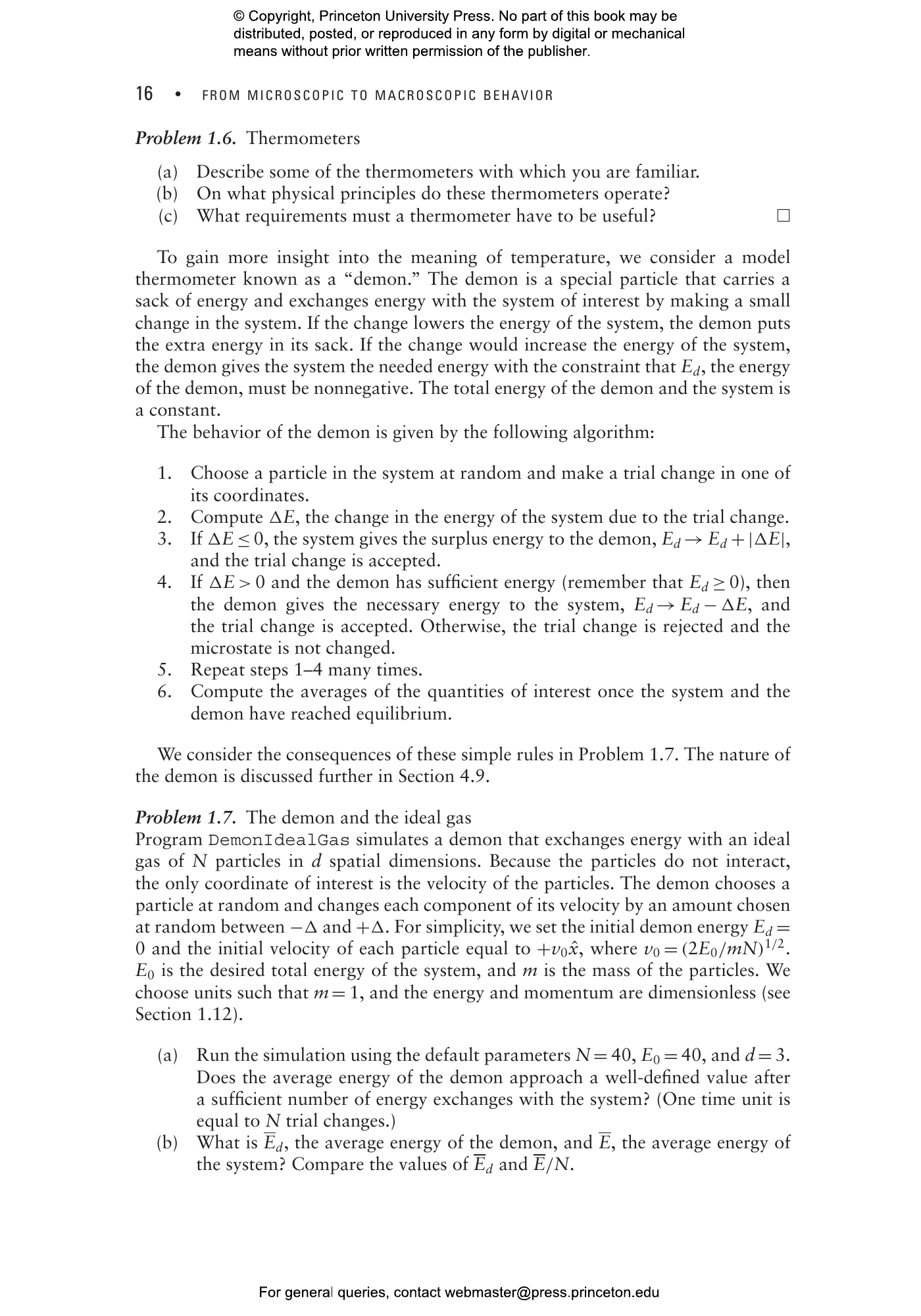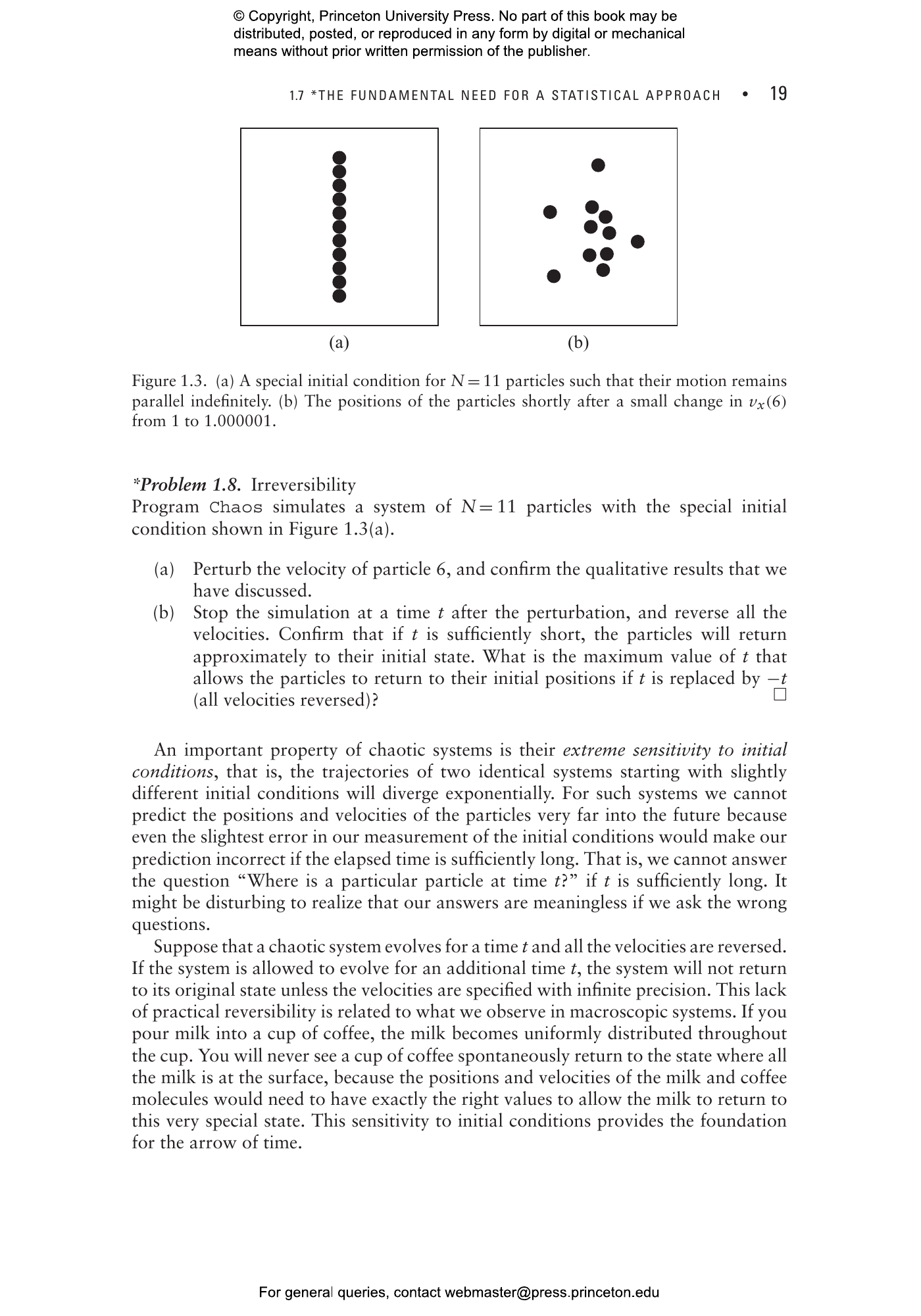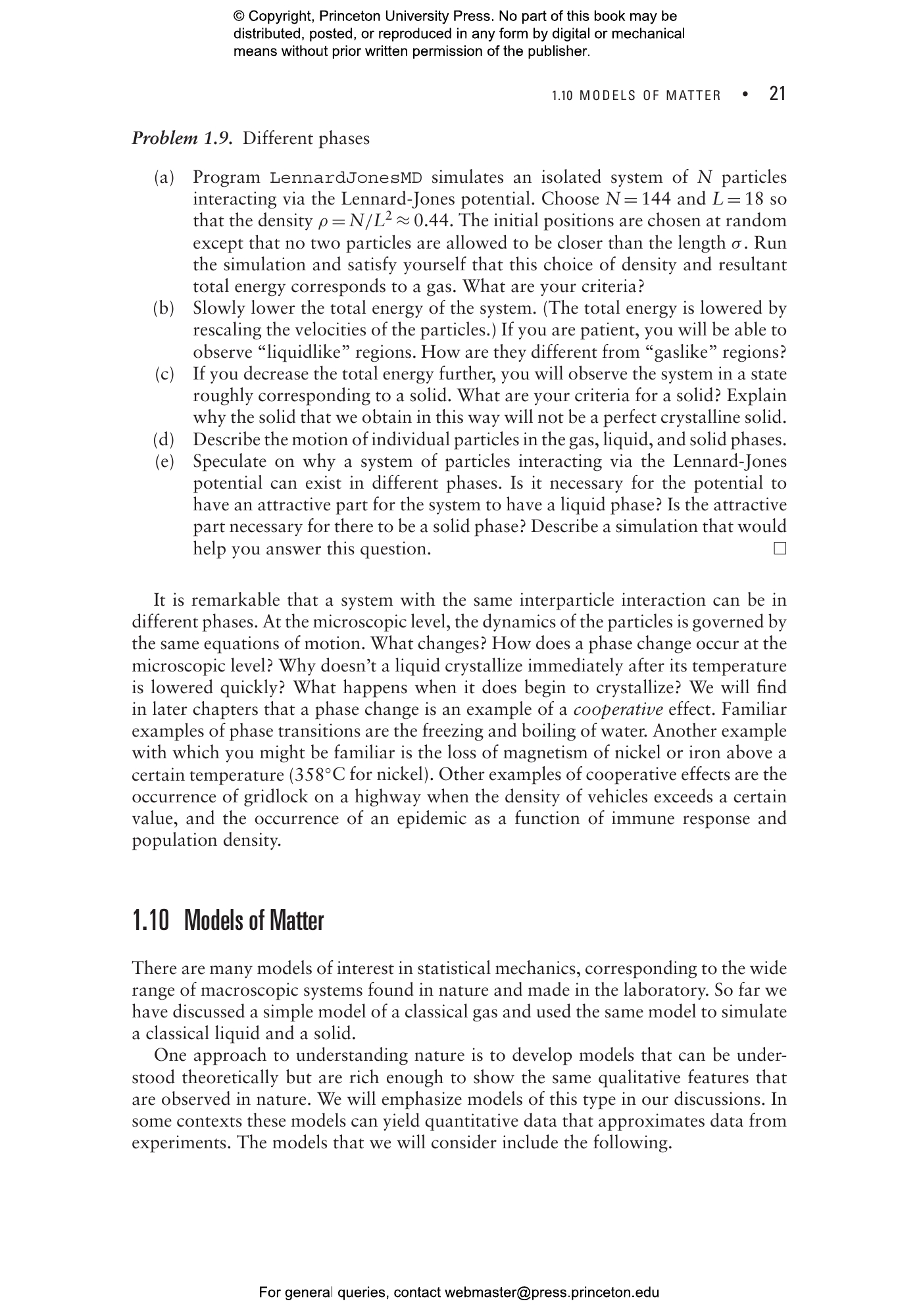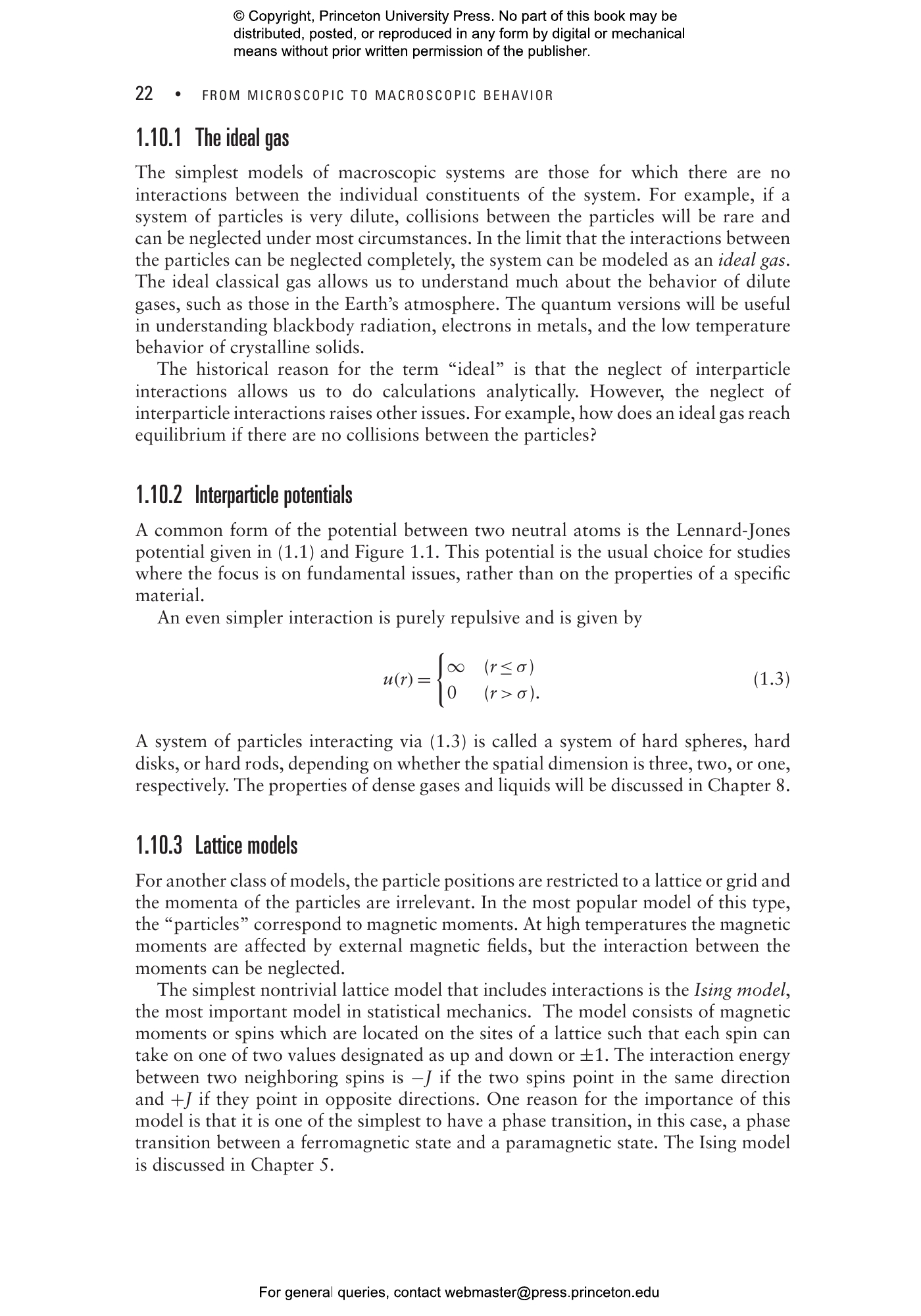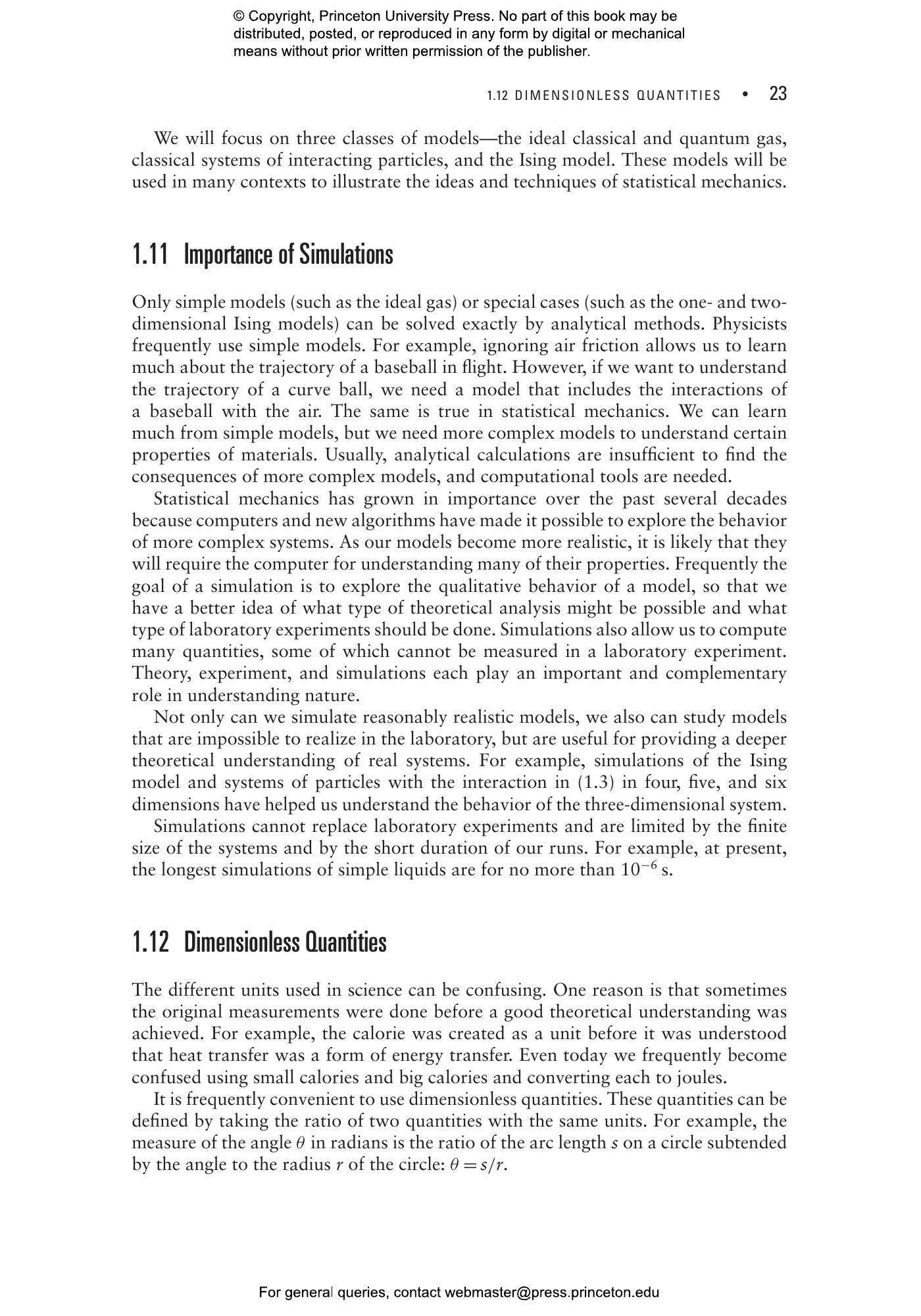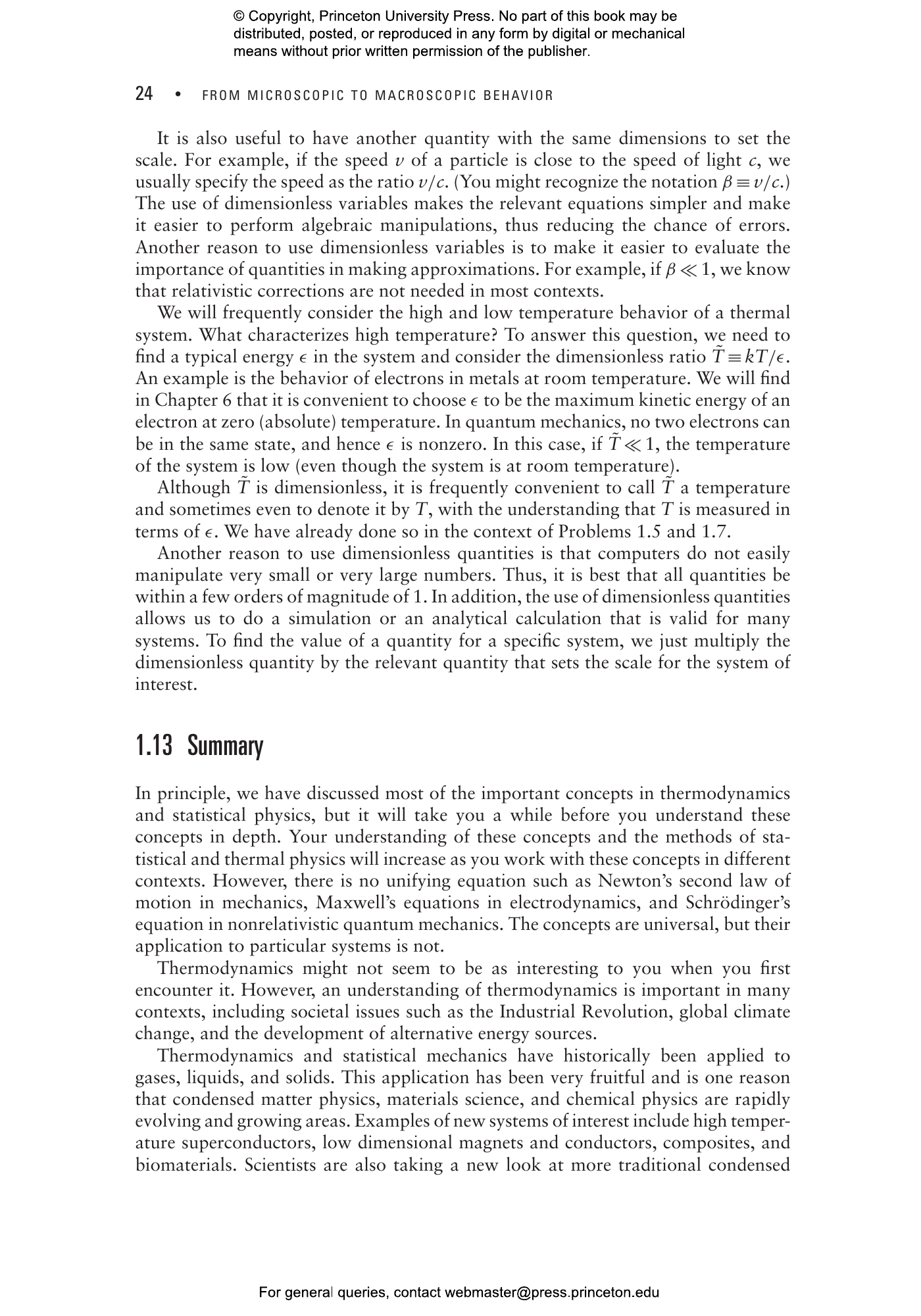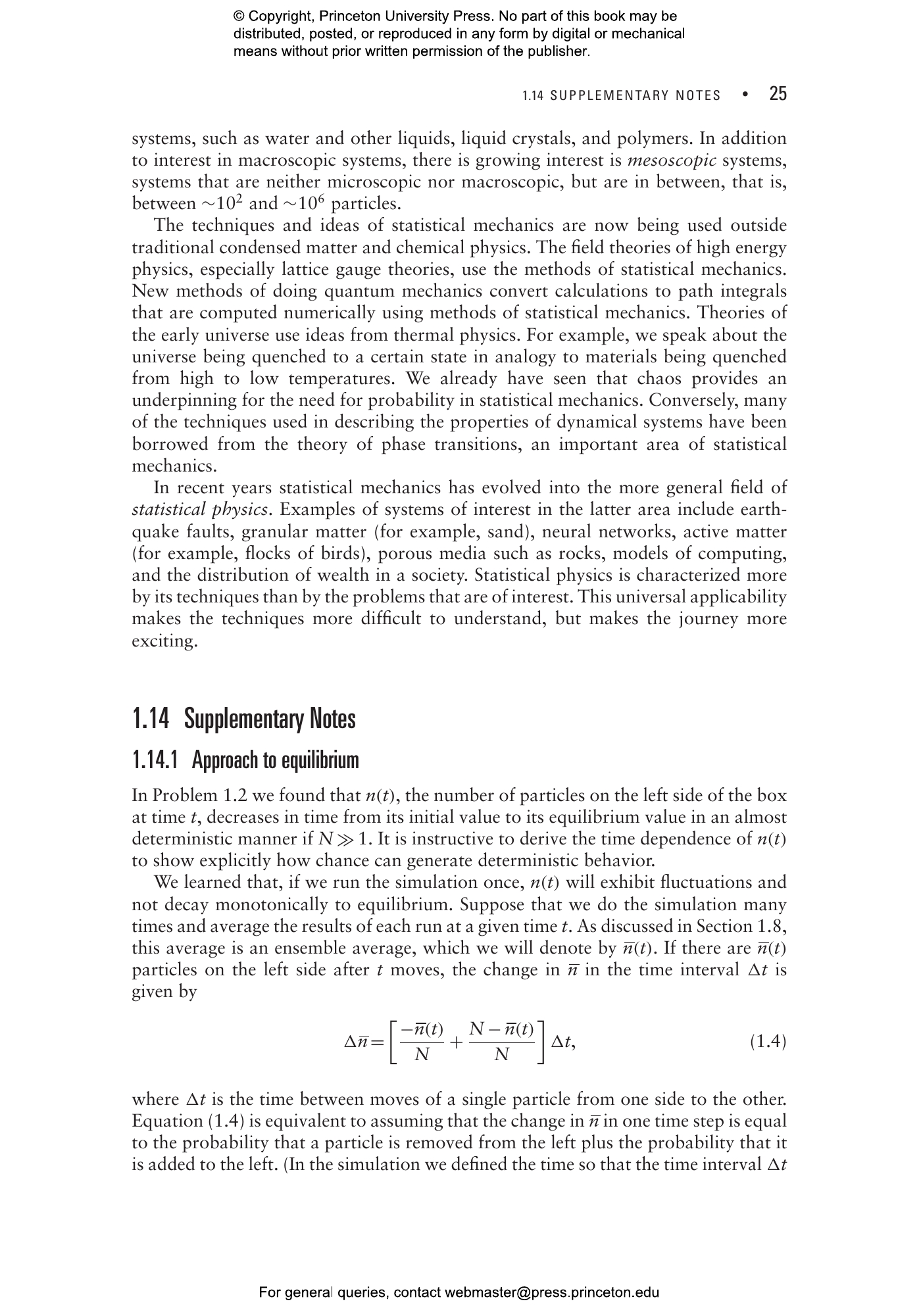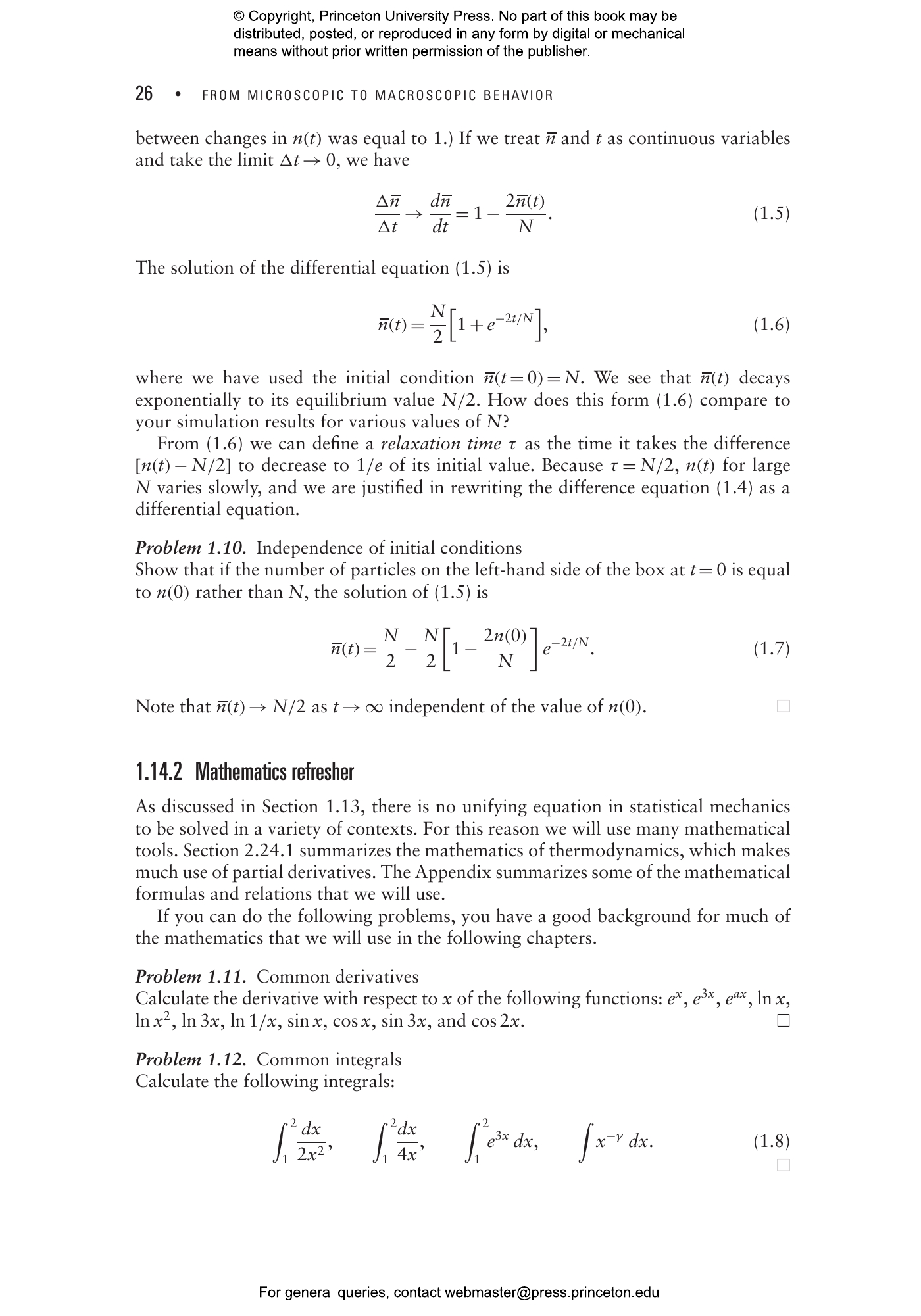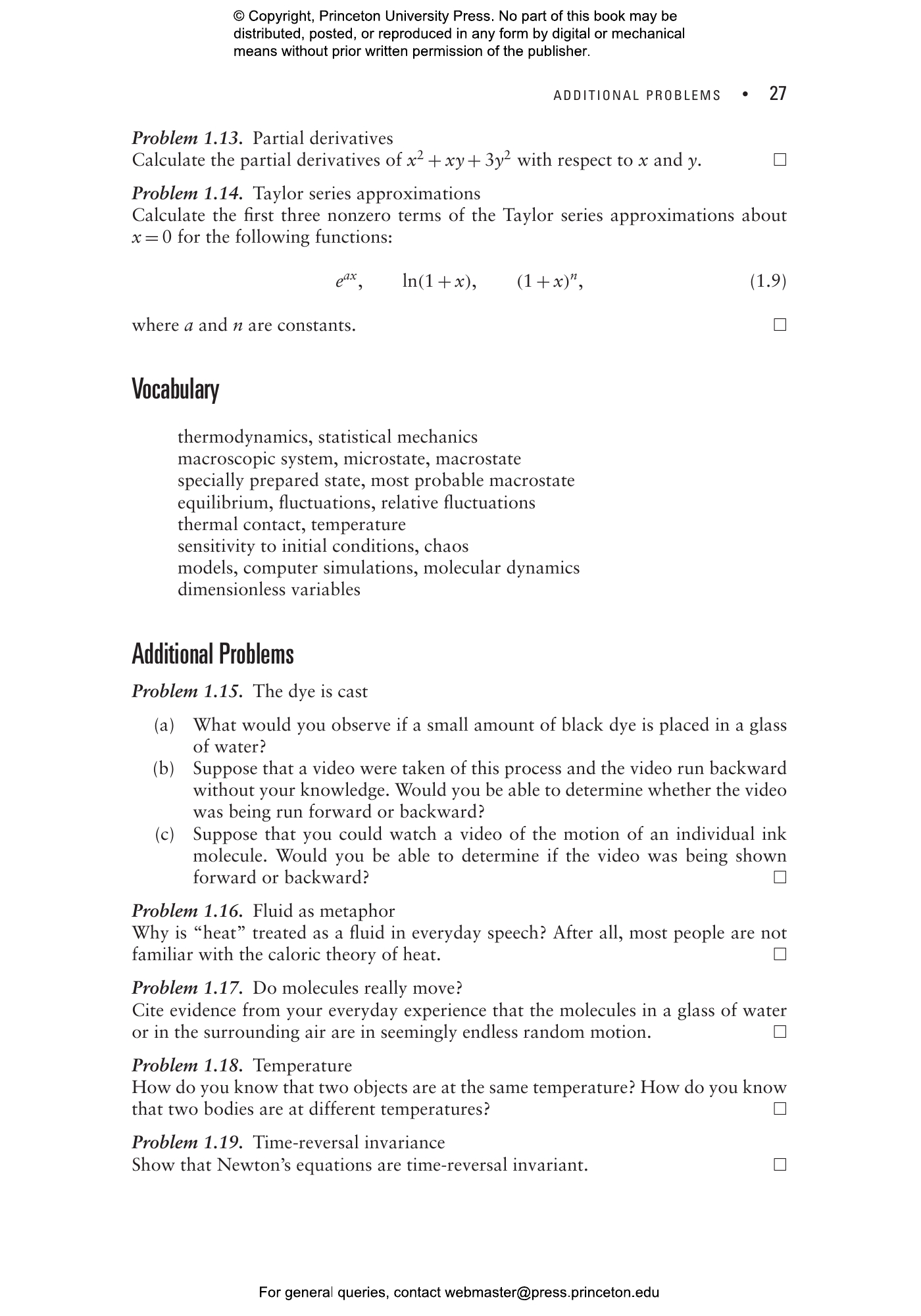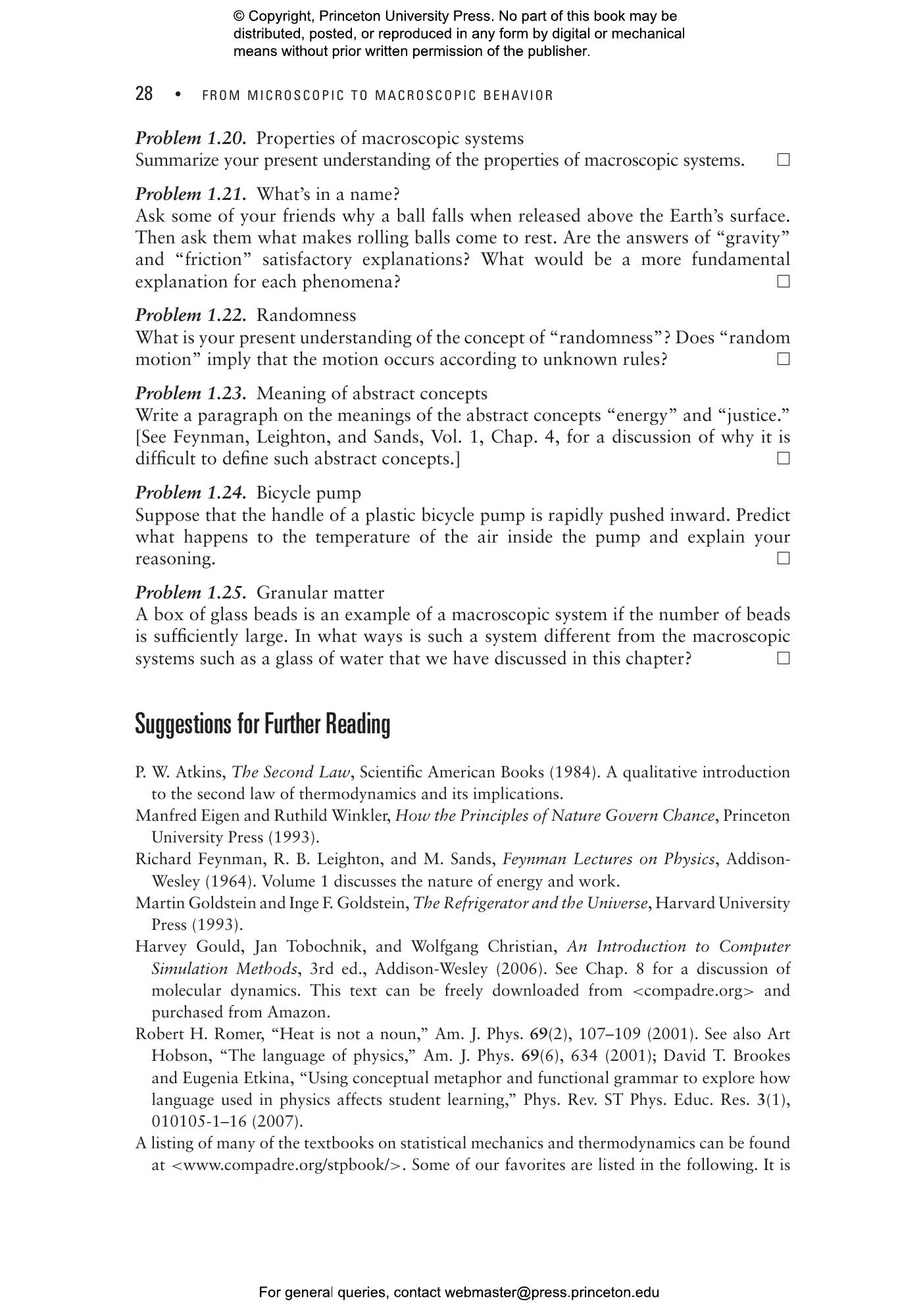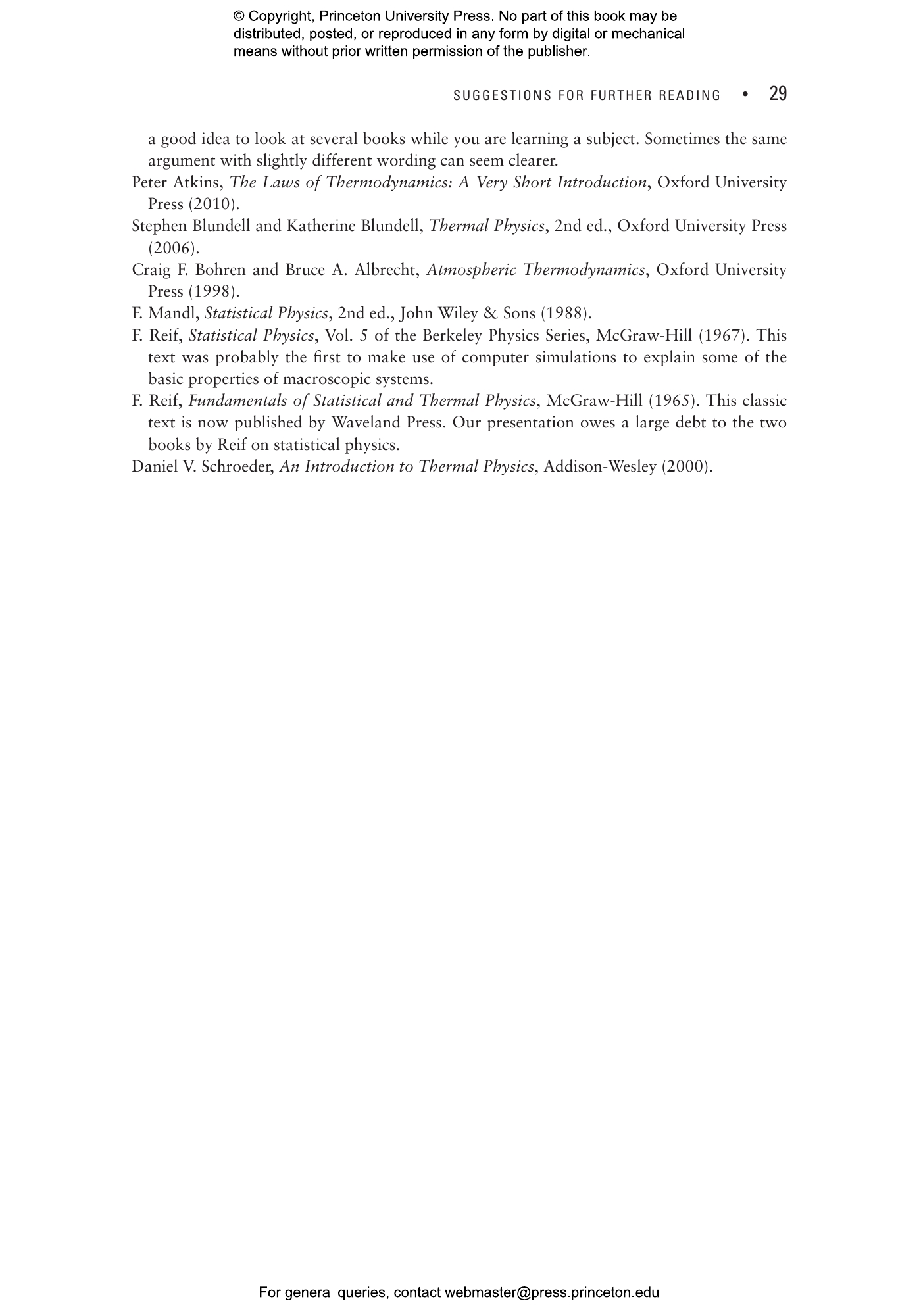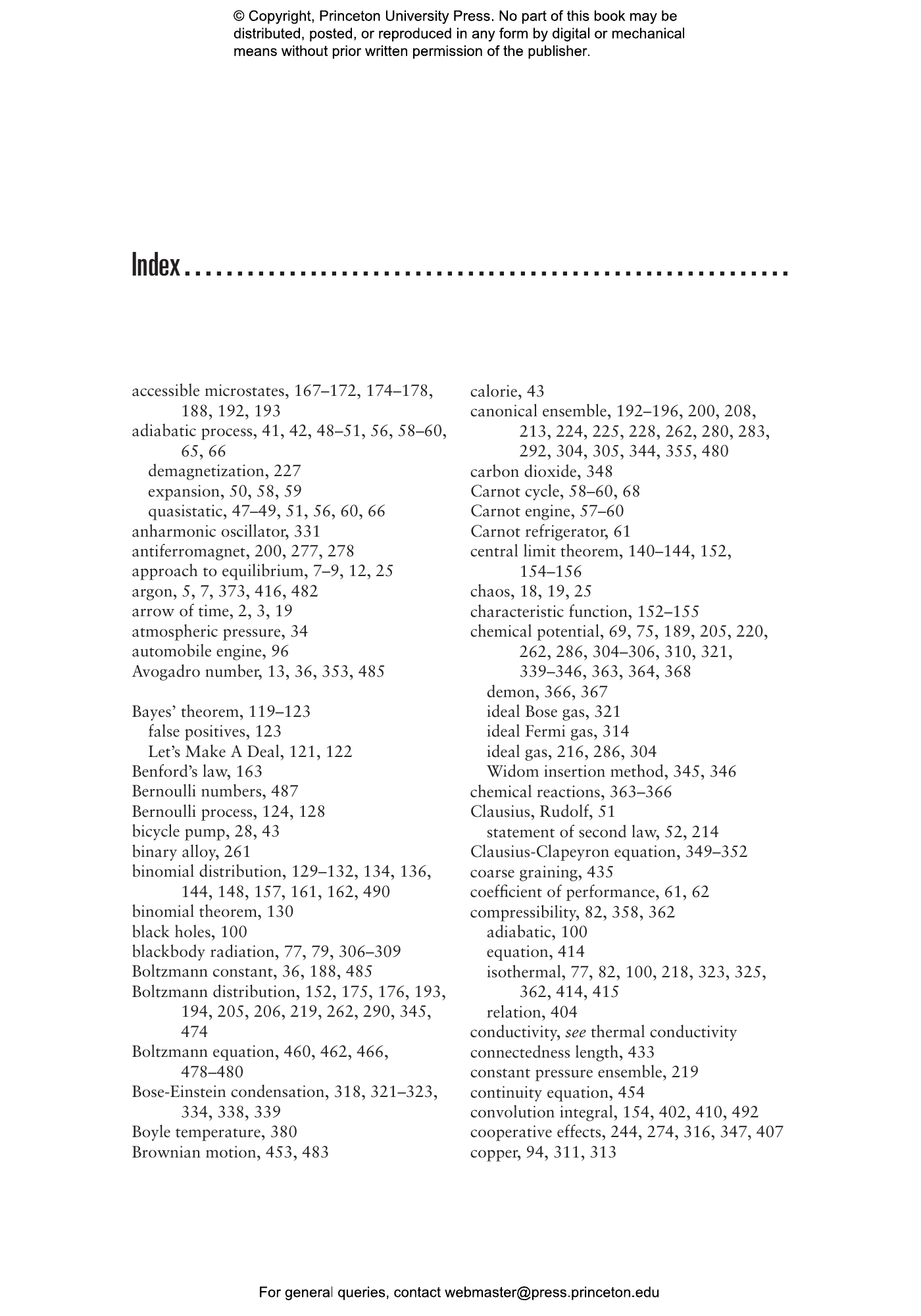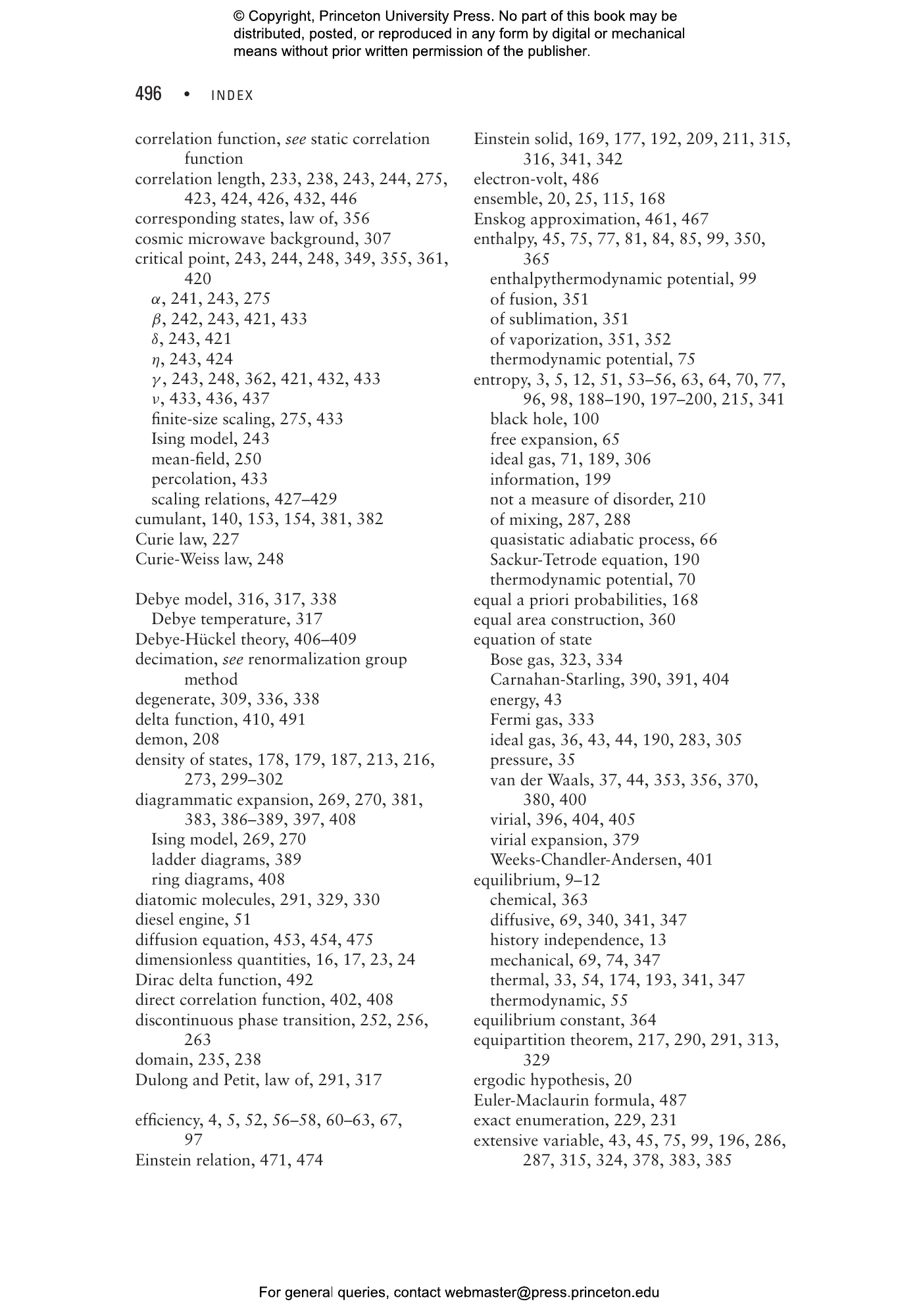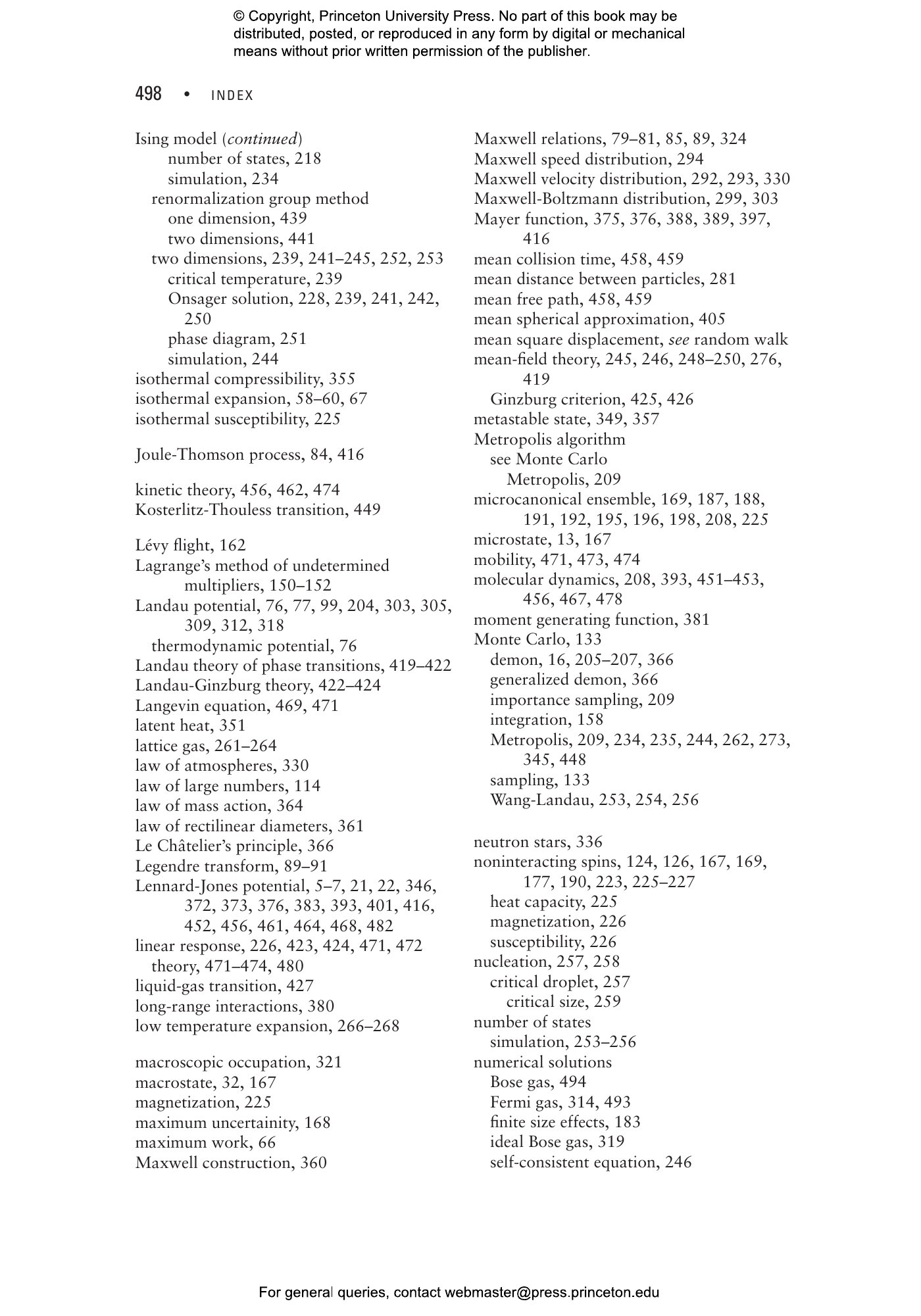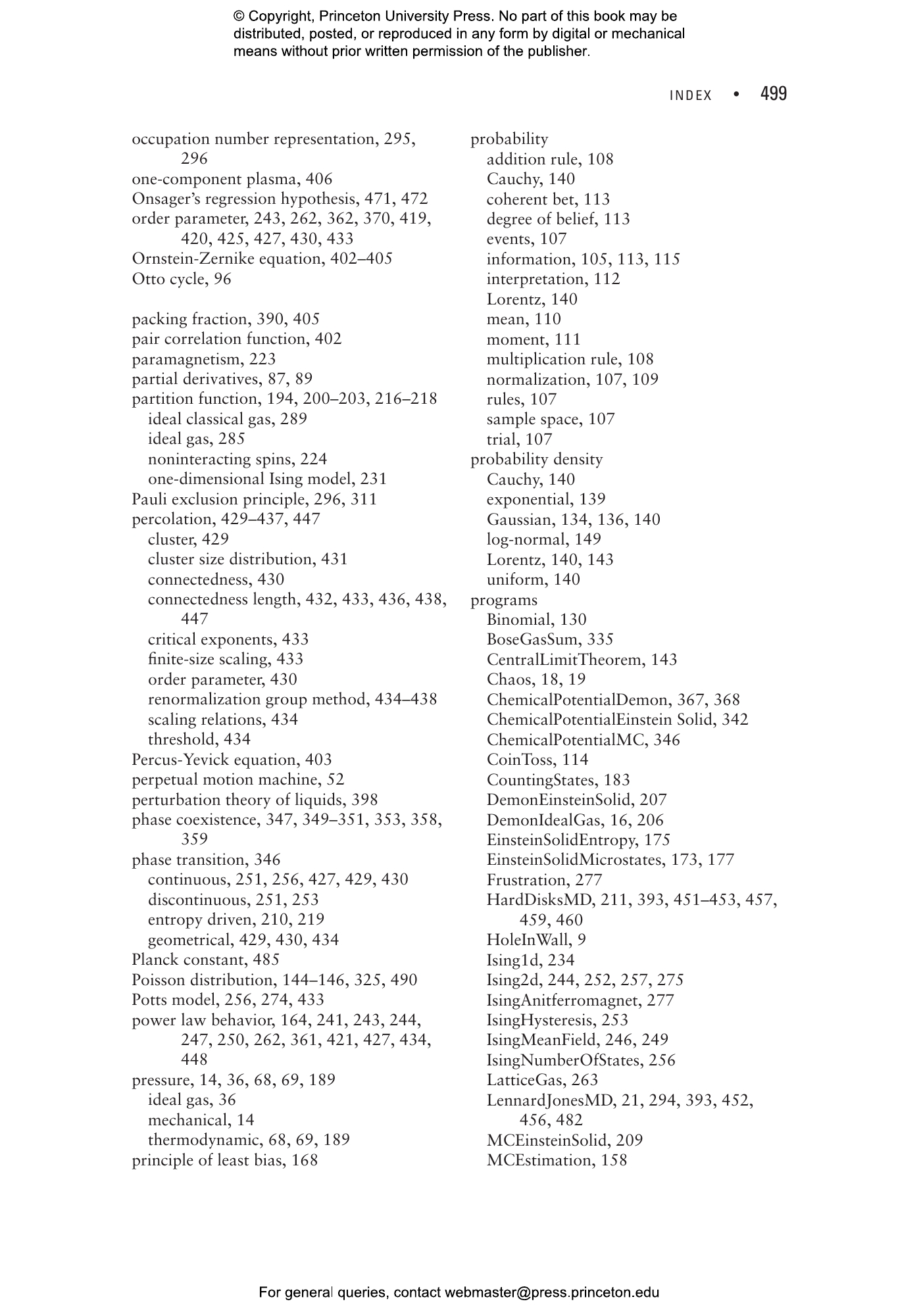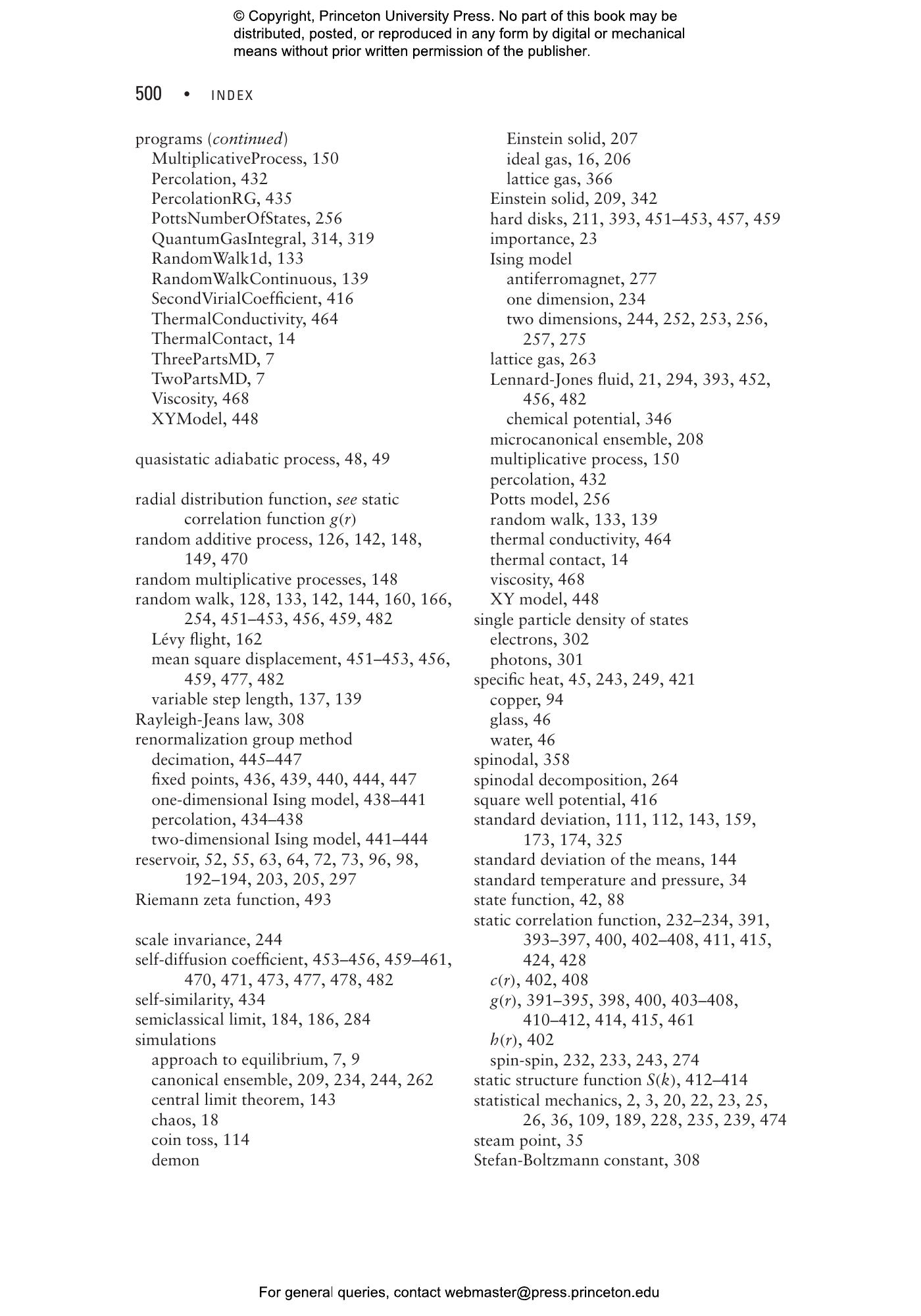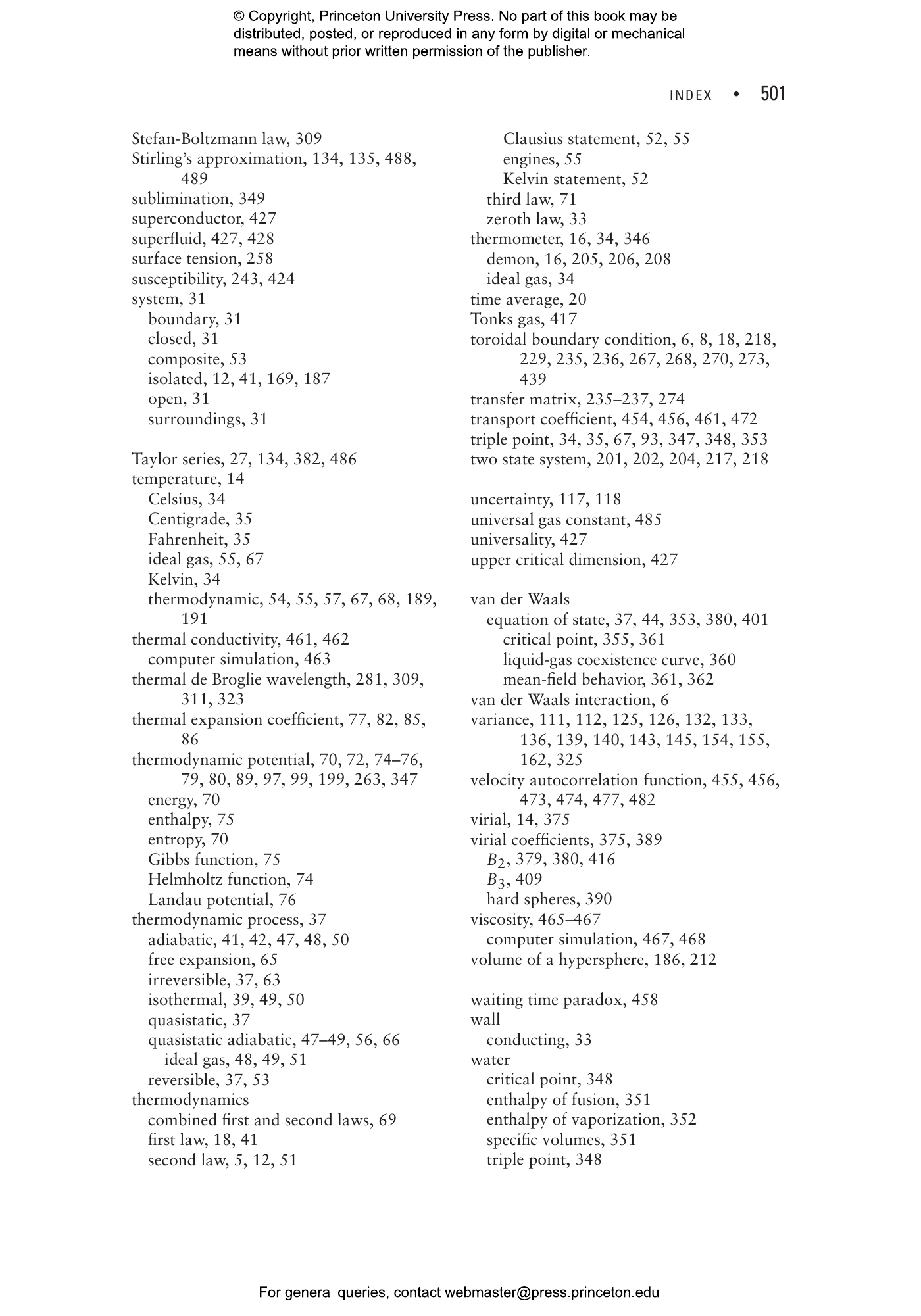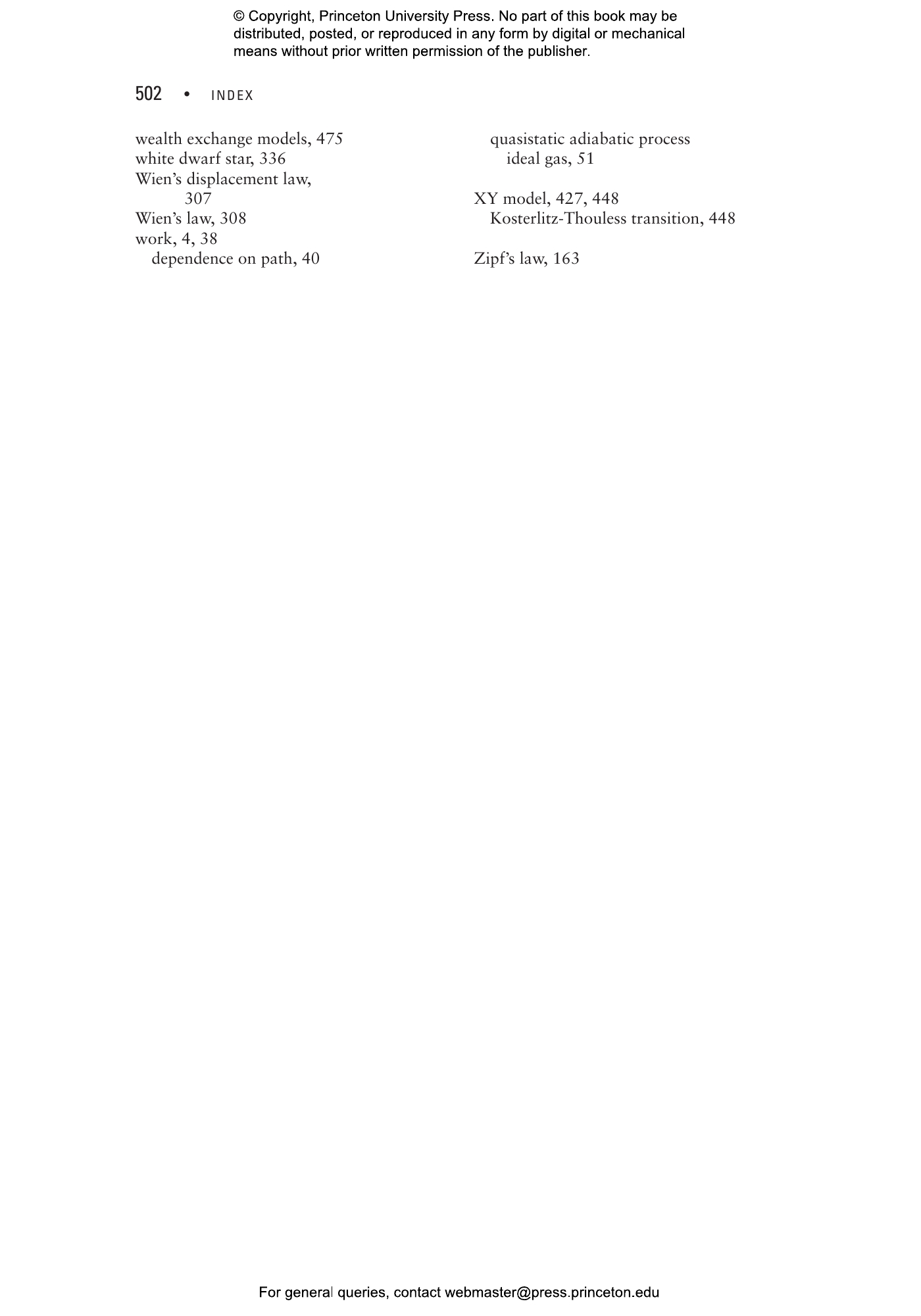This revised and expanded edition of Statistical and Thermal Physics introduces students to the essential ideas and techniques used in many areas of contemporary physics. Ready-to-run programs help make the many abstract concepts concrete. The text requires only a background in introductory mechanics and some basic ideas of quantum theory, discussing material typically found in undergraduate texts as well as topics such as fluids, critical phenomena, and computational techniques, which serve as a natural bridge to graduate study.
- Completely revised to be more accessible to students
- Encourages active reading with guided problems tied to the text
- Updated open source programs available in Java, Python, and JavaScript
- Integrates Monte Carlo and molecular dynamics simulations and other numerical techniques
- Self-contained introductions to thermodynamics and probability, including Bayes’ theorem
- A fuller discussion of magnetism and the Ising model than other undergraduate texts
- Treats ideal classical and quantum gases within a uniform framework
- Features a new chapter on transport coefficients and linear response theory
- Draws on findings from contemporary research
- Solutions manual (available only to instructors)
Harvey Gould is Professor Emeritus of Physics at Clark University. Jan Tobochnik is the Dow Distinguished Professor of Natural Science at Kalamazoo College. They are the coauthors, with Wolfgang Christian, of An Introduction to Computer Simulation Methods: Applications to Physical Systems.
"A remarkable textbook, Statistical and Thermal Physics . . . is sure to rapidly become a classic in this field. As opposed to some textbooks, that expose and develop the two disciplines in tandem, Gould and Tobochnik discuss Thermodynamics first and only then broach the subject of Statistical Mechanics, minimizing the confusion that arises from shifting back and forth between the two main story lines."—Daniel ben-Avraham, Journal of Statistical Physics
"Typically . . . students need broad exposure to a subject, as well as specific 'handles' to grasp. They need the step-by-step approach this book supplies. They need to experience the pleasure of unfolding a calculable model and of executing a computation that does what it is supposed to do. Many students, younger and older, will find the way Gould and Tobochnik's text satisfies these needs just about perfect."—Don S. Lemons, American Journal of Physics
"This is an ambitious book written by two experienced researchers and teachers. Starting from the microscopic dynamics of atoms and molecules, it uses statistical mechanical ideas to explain the thermodynamic behavior of macroscopic systems, and amply illustrates these ideas using hands-on computer simulations. Both teachers and students will find this book stimulating and rewarding."—Joel L. Lebowitz, Rutgers University
"This is an excellent book. It is better than any other textbook I have encountered for an undergraduate course in statistical thermodynamics. The authors' use of simulations to build a student's intuition is novel, and the problems and examples are very useful. They bring out the important issues and are a real asset in getting students to think about the subject."—William Klein, Boston University
"In addition to being a clear, comprehensive introduction to the field, this book includes a unique and welcome feature: an emphasis on computer simulations. These are integral to the exposition and provide key insights into fundamental concepts that so often confuse newcomers to the field. Simulations also give students a tool to investigate interesting topics that are normally considered too advanced for undergraduates. I highly recommend this book to anyone planning to teach undergraduate statistical and thermal physics."—Jon Machta, University of Massachusetts Amherst
"Gould and Tobochnik are respected researchers in the field and have a good sense of what is significant. Statistical and Thermal Physics includes many problems, exercises, and enlightening commentaries. The textbook places unique emphasis on numerical simulation techniques and what one can learn from them, and closely integrates them into the presentation. This is a welcome innovation."—Theodore L. Einstein, University of Maryland
